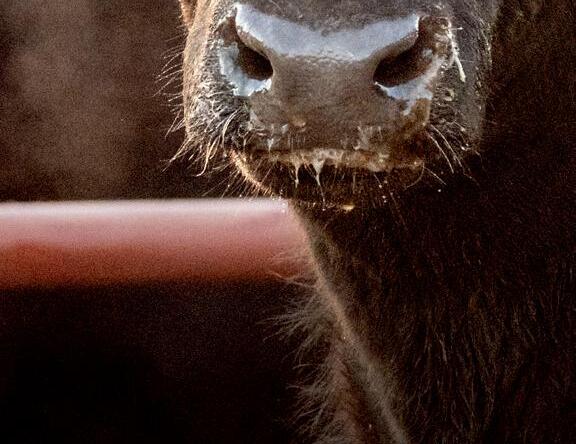Balanced Selection
A look into frame score, efficiency, longevity and performance.



A look into frame score, efficiency, longevity and performance.




Birdwell Plainview, TX (806) 681-3667



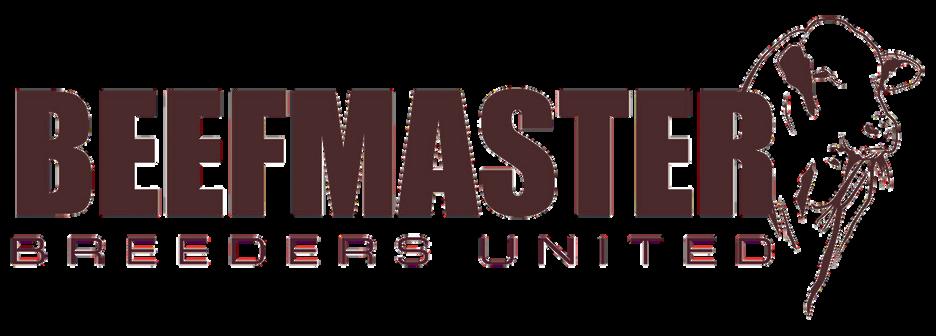

How to select a bull battery with frame score, efficiency, longevity and performance in mind.
By Kayla Jennings

Bringing home a herd bull that expands genetic potential.
By Jena McRell



Autumn has arrived, and with it, the excitement of bull sales across the Southwest.
Whether you are looking to refine your herd or start a new chapter in your breeding program, there is something special about finding that perfect bull.
This October, The Cattleman is your essential companion for the season ahead. Our Bull Buyer’s Guide is packed with sales that you won’t want to miss. Mark your calendars and plan your visits — your next herd sire could be just pages away.
In this issue, we also bring you expert advice from Oklahoma State University’s Mark Johnson and longtime auctioneer Doak Lambert. Brush up on modern-day bull buying economics and prepare your ledger for sale day. We explore what to plan for financially when selecting a sire. It is all covered starting on page 18.
For those interested in exploring fundamentals behind selecting commercial sires, don’t miss our feature
starting on page 10. Read to discover how to balance frame score, efficiency and performance alongside other important characteristics.
If you are curious about the Corporate Transparency Act and how the new requirement will impact your small business, turn to the “Where We Stand” column on page 24.
We review who is impacted, important dates and how to comply alongside attorney, accounting professor, cow-calf operator and Texas & Southwestern Cattle Raisers Association member Tom Caudle.
Here’s to a successful bull buying season and the many opportunities it brings! T C

Jaclyn Roberts Parrish Executive Director of Communications & Marketing/ Editor-in-Chief, The Cattleman




Published by Texas & Southwestern Cattle Raisers Association
P.O. Box 101988 Fort Worth, Texas 76185
Phone: 817-332-7064
Fax: 817-394-1864
Subscription Inquiries: (orders, address change, problems) tscra@tscra.org or 800-242-7820 tscra.org
Jaclyn Roberts Parrish Executive Director, Communications & Marketing/Editor-in-Chief jaclyn@tscra.org • 817-916-1794
Shelby Kirton Manager of Communications & Marketing
Jena McRell Managing Editor
Kayla Jennings Elyssa Foshee Sanders Proofreaders
Grace Dunham Executive Director, Events & Partnerships gdunham@tscra.org • 817-916-1745
Kyle Conway Director of Corporate Relations & Sponsorships kconway@tscra.org • 817-916-1746
Heather Heater Graphic Design & Print Production Manager
Production support by: GRANT COMPANY grantcompany.net
The Cattleman/TSCRA tscra.org
Cattle Raisers Insurance cattleraisersinsurance.com
Law Enforcement tscra.org, click on Theft & Law
Cattle Raisers Convention cattleraisersconvention.com

The morning light greets an Angus bull in East Texas.
All in a day’s work. A ranch crew near Victoria processes cattle.
The Bull Buyer’s Guide, starting on page 53, is a special advertising section filled with upcoming sales and private treaty opportunities.
Photos by Katie Barnett

I’m Still a Wax Marshall Man! I’m Still a Wax Marshall Man! I’m Still a Wax Marshall Man!
“ WAX Genuine Marshall ryegrass is my choice of ryegrass…been planting ryegrass for more than 20 years for grazing and hay. Majority of the time I have used WAX Marshall, but also try some of the new ryegrasses to see how they compare to my standard… WAX Marshall… I am still a WAX Marshall ryegrass man!
This past year, I tried the “Generic Marshall” from my local co-op. In short, it did not come close to production or have the carrying capacity like WAX Marshall… it looked more like Gulf… it did not have the vigor and fast recovery like WAX Marshall.
Every year is different and full of unexpected surprises, but from all my years with WAX Marshall, I feel confident in the outcome. The “Generic” just did not produce. Planting 700 acres of ryegrass, I do not need any surprises for myself or my cattle.

GUARANTEED Genuine

There has only been one consistent ryegrass for me for over 20 years… WAX Marshall ryegrass. If you want real Marshall ryegrass, make sure you ask for WAX Genuine Marshall… I do! ”



How to select a bull battery with frame score, efficiency, longevity and performance in mind.
Story and photos by Kayla Jennings
An unmistakable crispness fills the air each morning, a welcome reprieve from the scorching summers in the Southwest.
For some, trees are turning spectacular hues of gold and yellow. Spring-born weaned calves are developing well, and the fall calving season is coming to a close.
The last sure indicator of fall for cattle raisers is a coffee table scattered with bull sale catalogs, an office computer lit up with comparisons of expected progeny differences and a notebook full of lot numbers to watch in upcoming sales.
It is official. The search is on for the next herd bull.
Those who have taken advantage of artificial insemination are not immune to the hunt either. No matter how cattle get bred, time studying the bull prospect and how he fits the ranch’s goals is essential.
“You’ve got to take your time and breed for the future,” says Kade Thigpen, manager of Hefte Ranch. “Whether
you’re a commercial producer taking cattle all the way through, selling calves right off the cow or raising registered cattle, you’ve got to know who you are.”
Just past the rolling hills of Central Texas and into the South Texas brush country, Thigpen has managed Hefte Ranch’s Hondo division for more than a decade.
Since 1970, the seedstock Santa Gertrudis operation has been in the business of supplying bulls to area ranchers and beyond.
For Thigpen and the Hefte family, selecting balanced cattle by considering structural soundness, fertility, growth and adaptability ensures overall productivity and long-term sustainability of the herd.
“We decided about eight years ago that we wanted to produce the best all-around cattle that we could,” Thigpen says. “That’s when we started breeding intentionally for balanced animals.”


Kade Thigpen evaluates Hefte Ranch bulls regularly leading up to their production sale to ensure structrual soundess in addition to their EPD profile.
To that end, Hefte Ranch has selected for cattle with sound EPD profiles, as well as phenotypic traits important to longevity and long-term profitability. By incorporating genomic testing along with physical evaluation, they identify cattle with high average daily gain, low feed conversation and high yearling weights — all within a moderate frame.
“We are in a spot where our cattle need to be as efficient as possible,” Thigpen says. “I need them to grow and gain weight, but do it in a smaller frame and do it faster.”
A couple hundred miles farther south, Jason Sawyer, Ph.D., East Foundation chief science officer, shares the same sentiment. Sawyer’s responsibilities span scientific programs and research integration into the foundation’s ranching operations.
The East Foundation is a 100% range cow-calf operation that retains their own replacements. For this reason, bull selection is even more valuable as those genetics will have influence over the herd for years to come.
“We want bulls that are moderate frame, with a balance of EPDs that maintain growth but emphasize maternal reproduction,” he explains. “Our first priority is to continuously improve our cows and their fitness for our conditions, balanced with production of a desirable calf in the marketplace.”
In addition to Sawyer’s current role with East Foundation, his career path has offered a variety of experiences within Extension programs and research. He is acutely aware of what many commercial cow-calf producers are after — pounds.
“The revenue-maximizing strategy might be to seek larger weaning weights, and this is correlated with frame size,” Sawyer says. “This might not be the profit-maximizing strategy in all cases, but in the absence of strong cost-of-production data, it can be the fallback decision.”
This seems to be true for many of Thigpen’s customers as well. While seedstock ranches approaching him for bulls may have varying goals, he finds commercial producers are often seeking enhanced performance to fit their management plan.
After all, Sawyer says research shows at the same placement weight, larger-framed animals are expected to have greater average daily gain, and typically this results in better feed conversion and a lower unit cost of gain in the feeding period.
we look for moderate frame size in bulls we purchase.”
— Jason Sawyer, Ph.D., East Foundation



On the other hand, selecting large-framed cattle to an extreme has its faults.
“Later maturing and larger mature size means that these cattle typically require more total feed and days on feed to achieve a desired body composition and carcass,” Sawyer explains. “Another risk is that as frame size gets very large, the upper limits acceptable for processing may be exceeded before carcass maturity and fatness levels are achieved.”
In contrast, Sawyer and Thigpen agree moderately framed cows are often viewed as more efficient from a resource perspective, as their annual maintenance requirements are typically lower on a per-head basis.
“We’ve been selecting cattle to still have the yearling weight and average daily gain, but in that smaller frame score,” Thigpen says. “Our customers have really appreciated it. The cattle grow quicker, they’re done growing sooner, and the bulls tend to hold together better for longer as they reach 2 and 3 years old.”
What Thigpen has learned over time is when largerframed bulls fall apart after a breeding season, it can be because they weren’t done growing at the time of turnout. In other words, they hadn’t grown into their large frame, so their energy was spread too thin as they were covering cows and reaching maturity in tandem.
That problem has become a thing of the past by moderating the mature size of the bulls.
“When I pull them off of cows, they still look like bulls,” he says. “They’re held together, and I don’t have to feed
them. So, we’re not spending as much time and money on those bulls getting them prepared for the next breeding season.”
Sawyer says research backs this claim for female contemporaries, as well.
Since moderately framed cattle also tend to reach physical and sexual maturity at an earlier age, reproduction in heifers is often hastened. In most systems, he says this reduces the cost of replacements and increases a cow’s lifetime productivity, both of which contribute to lifetime profitability.
“For us, moderation is the key,” Sawyer adds. “In our environment, we need to run crossbred cows with some percentage of Bos indicus influence.
“Over time, the cow herd increased in frame size as a result of this influence and selection for larger weaning weights. Now we look for moderate frame size in bulls we purchase, and aim to moderate mature size of females.”
Coming from a breed with a tendency toward larger frame scores, Thigpen has seen the cycle Sawyer describes firsthand. His experience shows moderating the herd is a slow process, but like most things that take time, it is worth doing. They have achieved this by studying EPD profiles, production records and phenotype. Armed with information, they can make sound decisions on replacement females, as well as bulls used.


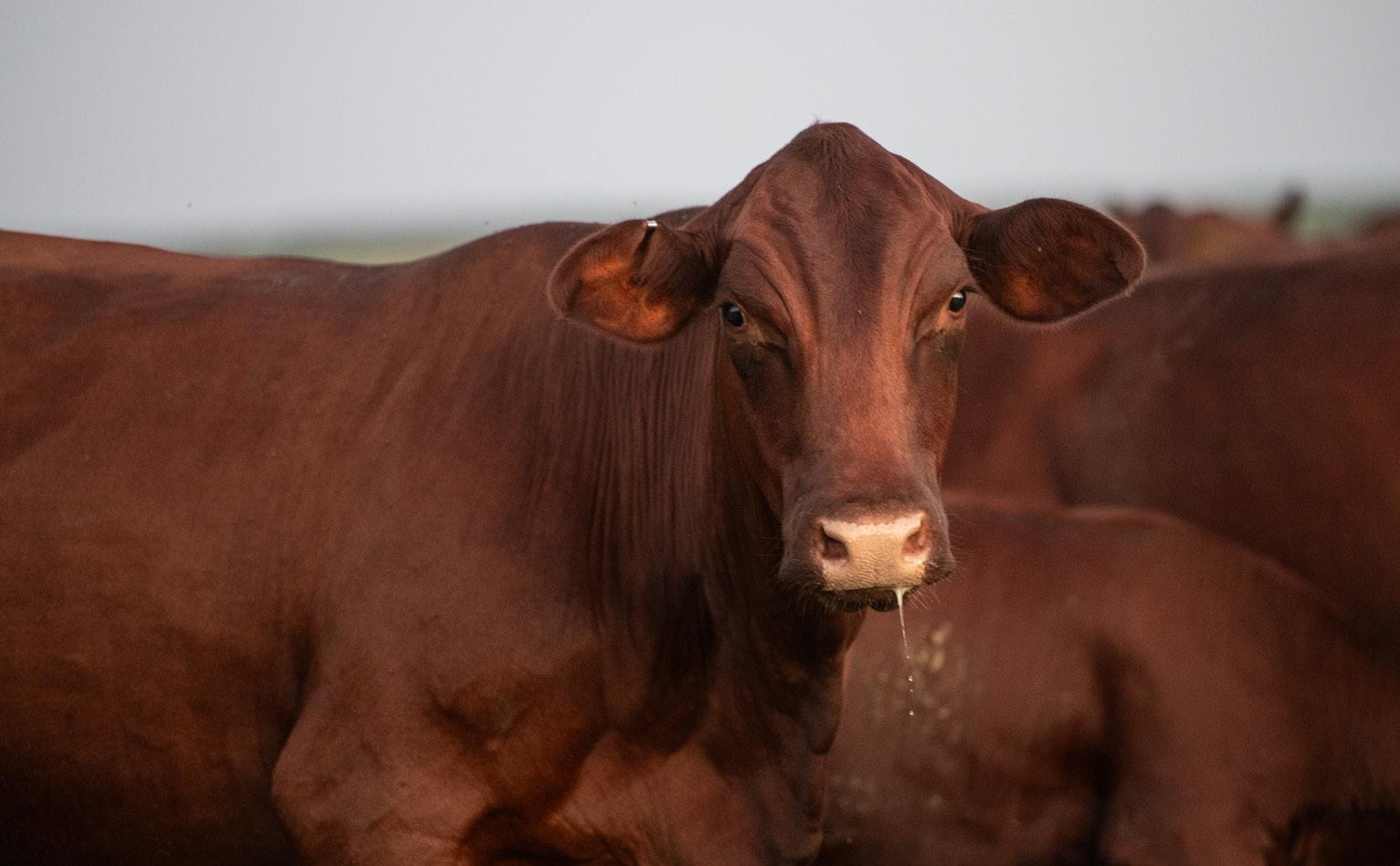
“That has helped us build consistency and get there faster,” Thigpen says. “But it’s still a long process to change an entire herd. We’re selective about the cattle we bring in because when you get smaller, you can get too refined.”
To avoid negative outcomes associated with selection for outliers, they collect DNA samples to improve the accuracy of their selection tools, namely EPDs, in addition to phenotypic data such as weight, hip height and pelvic measurements. Thigpen says they look at everything as a balance instead of simply selecting the smallest cattle in the pen.
With any decision, there are compromises. Sawyer says when cattle frames are too small there is potential for reduced weaning revenues, calving difficulties and decreased marketability of calves.
“Extremes in either direction can create problems,” Sawyer says. “Just as large-frame steers can exceed tolerance for processors, there is a lower limit of acceptable carcass weight as well. Overall production efficiency can also suffer if outputs like weaning weight or carcass weight are reduced faster than inputs like feed resources.
“Individual operators should have clear goals and make selections toward those goals, with the understanding of the tradeoffs that come with selection for growth traits or larger frame score.”
The same is true for Thigpen. By considering frame score, he saves input costs on females in production, because they simply require less to do more.
“They stay fat, and they raise a big calf,” he says. “When a cow’s priority is just raising a calf, and she’s not growing and trying to maintain a 1,500-pound frame, they tend to hold up so much better.”
Like the bull counterparts, Thigpen says he ends up spending less time and money on those cows when they’re raising a calf and when it is time to breed again.
As a result, he has seen more longevity in the herd and more calves over that cow’s lifetime.
To ensure long-term herd productivity, Kade Thigpen advises producers to strive toward a cow weaning a calf 50% of her body weight.



“We have multiple cows that are 15 years old, and they’re all more moderate, well-balanced cows,” he reflects. “None of them are extreme in any specific traits, but they’re very balanced and they’ve produced many calves for us.”
To put a number to it, Thigpen requires their cows to wean calves at least 50% of their body weight. This is a statistic he believes the industry should strive toward, as well.
“We are losing so much land to development, so our business has to be as efficient as possible,” he says. “Bringing down that cow size, getting these cattle to maturity faster, getting these cows to live longer, to produce more calves, those are many things that we need to be keying in on.”
In the end, the cornerstone of success in a cattle operation is setting clear goals and working toward them with every management decision. Assessing frame score along with other economically relevant traits is one piece of the puzzle.
“You have to know who you are because if you’re trying to do multiple things, you’re probably not going to do well,” Thigpen says. “It’s hard to move a herd
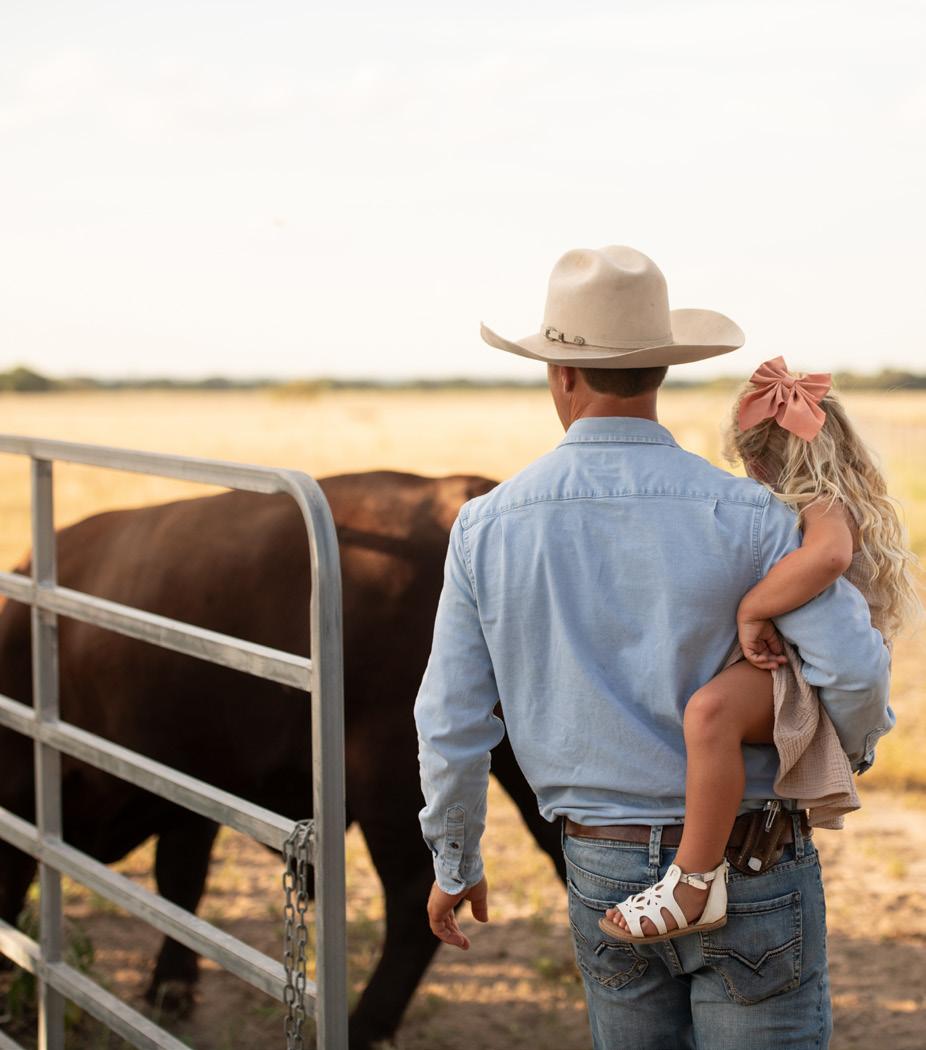
overnight, and you run into a lot of issues when you do. You’ve got to take your time in breeding. You’ve got to stick with your plan.”
As another year passes, these ranches will do what they have always done. Their tried-and-true approach to seeking balance despite industry swings has kept them sustainable and profitable.
“Making a decision on frame size is like many decisions producers face — there is no one-size-fits-all answer,” Sawyer says. “Moderate frame size is beneficial in more extensive environments and may result in greater lifetime production efficiency for a cow herd, but there are certainly desirable benefits of largerframed cattle in the overall production system.”
To help producers work through this conundrum, Sawyer suggests they find clarity about goals, implement cost tracking and evaluation systems, understand the relationship between frame size and other important variables in the system, and employ a mechanism to track progress with production records.
“When we have these things in place, we can make our best decisions, almost all of which require compromise somewhere,” he says. “We can also identify opportunities for adjusting our goals or systems to help us make continuous improvements.” T C


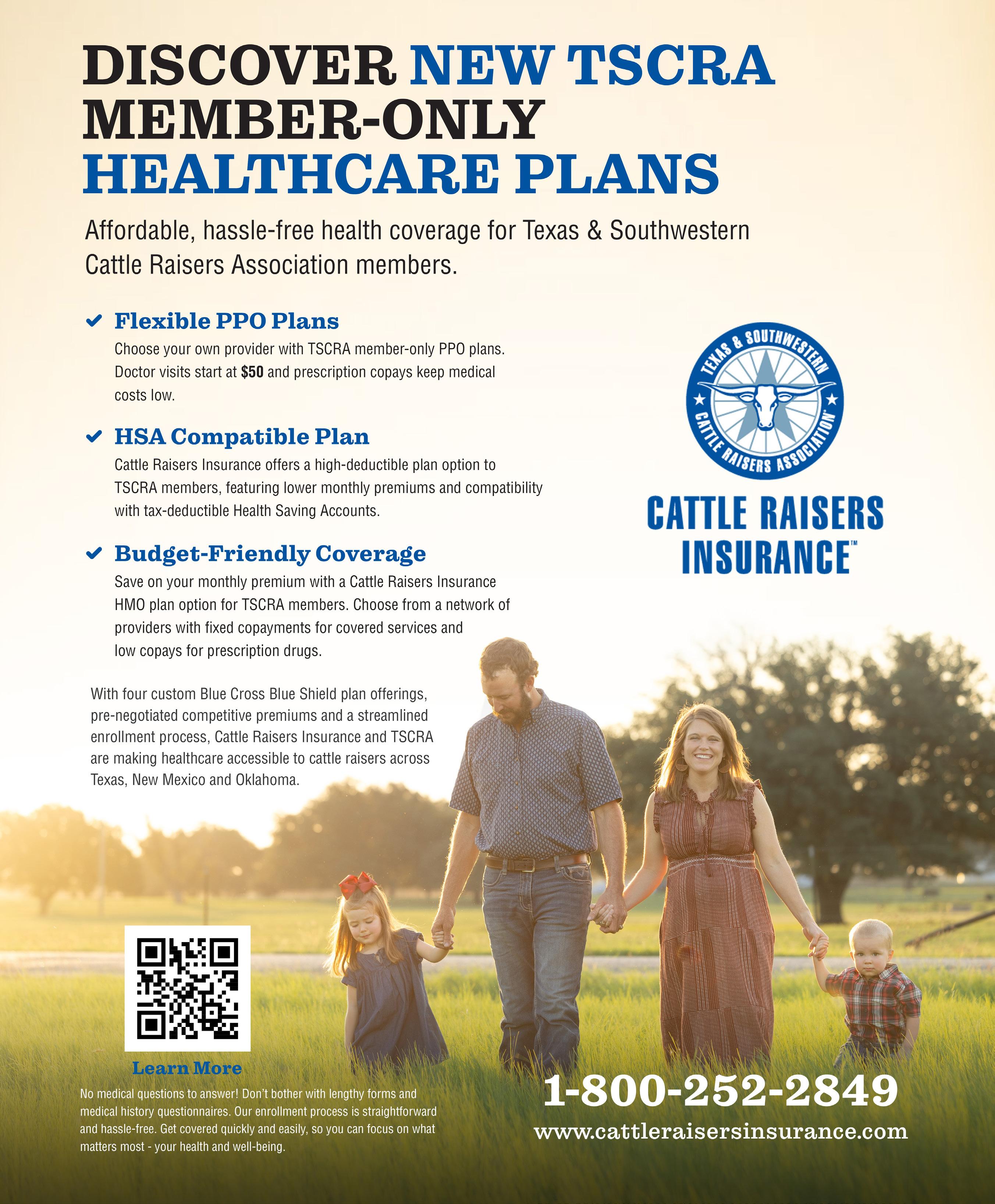
By Jena McRell
Purchasing a bull can feel a bit like looking into the future.
Through a crystal ball illuminated with pedigree and performance data, genomic information and phenotypic measures, breeders must analyze potential sires from every angle to find the best match.
Because, when it comes down to it, tomorrow’s beef herd will be defined by today’s bull-buying decisions.
Over time, a lion’s share of the genetic improvement across the industry is the result of sire selection. Whether through natural service or AI, a bull’s influence will be felt for generations. As boots line the stands at sales this fall, this decision will not be taken lightly.
“We are looking at an unprecedented and historical opportunity with regard to rebuilding the beef cow herd,” says Mark Johnson, Ph.D., animal science professor and Extension specialist at Oklahoma State University. “We can address what kind of cows fit our

production environment — and genetically make them what they need to be.”
The current season, whether weaning spring calves, capturing weights or pregnancy checking cows, is an ideal time to take stock of how the herd’s current genetics are working, Johnson says.
Answers to questions concerning breeding status, growth rate or overall condition can offer insight into future improvements.
“What do we find from that data that leads us in a direction for determining the sire of our next generation of cows?” Johnson asks.
On a macro scale, all eyes remain on the nation’s cattle inventory for signs of herd expansion. As of Jan. 1, USDA reports 87.2 million head of cattle in the U.S., with 12 million head in Texas. Twenty five years ago, in 1999, the national total was close to 100 million head.

by Kayla
Tight supplies and strong beef demand have resulted in all classes of cattle bringing record-high values. Yet, unyielding input costs and weather challenges may still restrict a rancher’s ability to build back or expand the herd. Experts like Johnson believe it will be a slower rate than in previous cattle cycles.
Even if more heifers are retained this year, Johnson says it will take a three-year window before there is an increase in calves at market.
“At this point, it remains a question whether or not we will see a higher heifer retention rate in 2024,” Johnson says. “Prices are good, and it looks like they are going to stay that way for a while. It is an exciting time in the cattle business.”

“Commercial cattle producers are getting more than they’ve ever gotten in their lifetime for calves,” Lambert says. “They understand that is probably going to translate into paying more for a bull in the fall, but they are ready to buy bulls.”
Across all breeds, he says bull sale trends have averaged higher throughout the last several years. This year will be no exception.
Even during these uncharted market conditions, Johnson says there is a timetested response to the question, “What is a good bull worth?”

Longtime auctioneer Doak Lambert, based in Decatur, is well-versed in the energy and enthusiasm that comes along with bull sale season. He’ll cover nearly 50 events this fall, and says he looks forward to the next generation of excellent sires coming up for auction.
The barometer he was taught and still advises is: A bull is worth the value of five calves he sires.
The calculation is unique to each operation, the professor explains, and hinges on the herd’s intended marketing end point. Are calves sold at weaning? Or are they developed as yearlings and run as stockers? Will ownership be retained through the feedyard?
Or an important consideration this year especially, will the bull’s daughters be kept and serve as the foundation of the growing cow herd?

“We want to identify bulls that unlock profit potential for your operation,” Johnson says. “Addressing those questions is critical as far as what genetic values you should put your selection pressure on and how you should spend your bullbuying dollar.”
Sale reports derived from a late-August USDA Weekly Cattle Auction Summary in Texas help shed light onto what to expect on sale day.
Medium-weight feeder steers, roughly 600 pounds, averaged up to $250 per hundredweight. That’s a total of around $1,500 per head. The estimated value of a bull siring five of these feeder steers is $7,500.
In the same market summary, bred heifers averaged up to $1,875 per head. Based on those figures, a bull siring heifers to be bred and sold at auction is valued around $9,375.
USDA’s Texas-Oklahoma-New Mexico Weekly Direct Slaughter Cattle Report also showed 950-pound steers grading more than 80% Choice brought around $300 per hundredweight, or $2,850 per head. With those numbers in mind, a bull siring five fed steers of that quality is valued around $14,250.
While these figures are purely estimates given current market reports, cattle price trends are expected to hold for the next few years. Johnson says bull buyers should put pencil to paper to decide what their price range could be when sale day comes.
“Everyone has to do the math for themselves,” he says. “We all want to find that next great bull and get him as cost efficiently as possible.”
When the gavel drops, the value of bulls will vary based on geographic region, genetic makeup and demand when entering the sale ring.
Lambert reminds producers that like all things, a bull’s cost of production is much higher than it was a few years ago. Seedstock producers are not immune to the sting of heightened input costs and inflation.
“It is costing more to produce these bulls, just like the producers are getting more for their calves when they sell them,” he says. “They [seedstock breeders] can’t sell a bull for what they were selling him for 10 years ago.”
When weighing a potential investment, Johnson says not to forget about the indirect costs associated with selecting a sire unfit for the herd or environment.
“It’s not only the money that investment in genetics can make you,” Johnson says. “The scarier side of it is what not investing in the appropriate genetics for your operation can cost you.”
While today’s herd sires come with a higher price tag, Johnson and Lambert agree they also come with
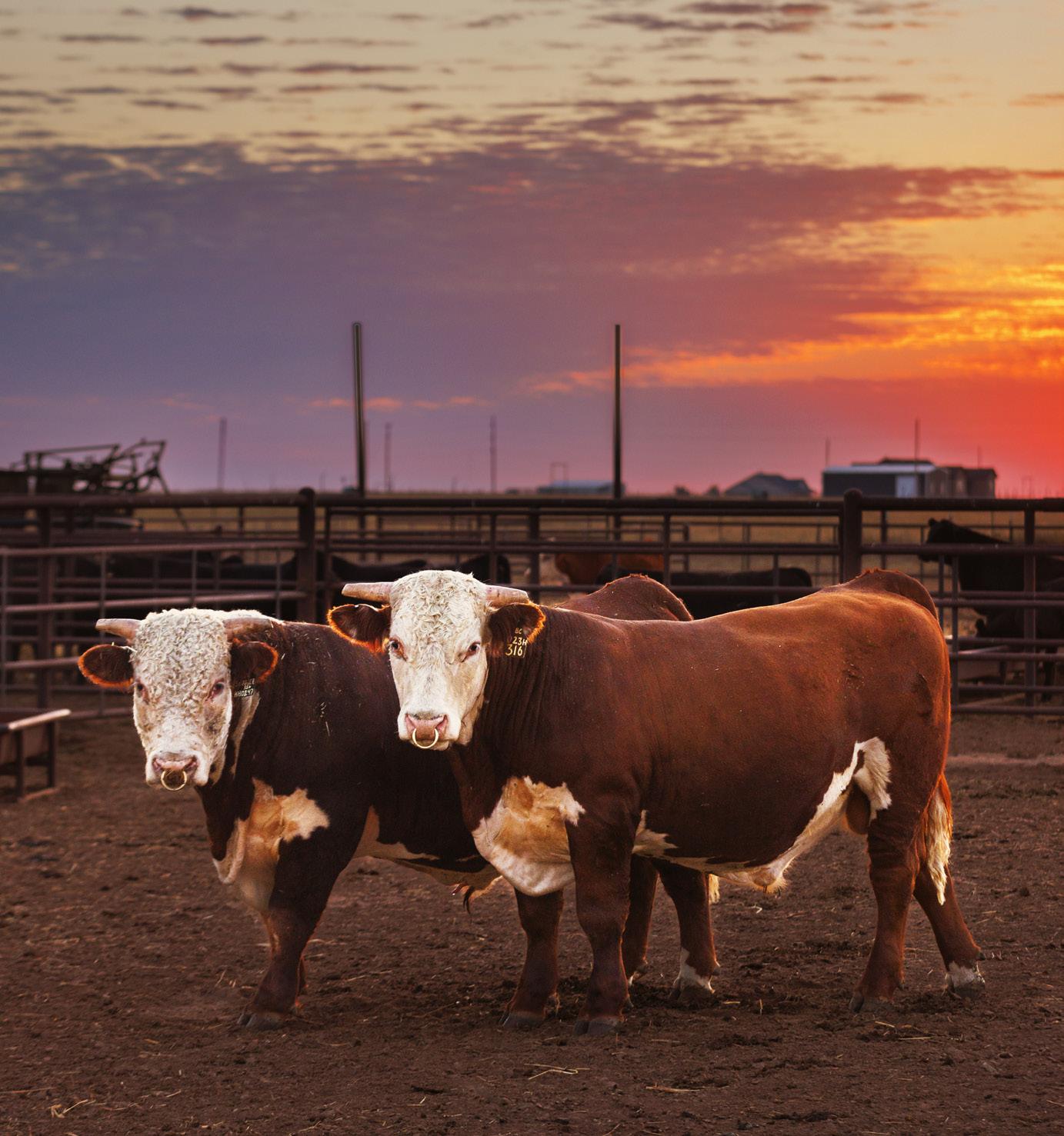
more genetic and predicted performance information than ever before.
Most beef cattle breeds offer up to 25 genetic values or expected progeny differences that are reported from phenotypic data. Then, DNA testing and the resulting genomic profiles allow for even greater accuracy on performance indicators.
“As we look back over the generations, it is impressive what cattle breeders in the U.S. have accomplished,” Johnson says. “It is a testament to doing a good job of selection and addressing those bottom-line traits that are of primary economic importance in our industry.”
He adds that an operation’s intended marketing end point should be the lens through which to filter the wide range of EPDs, selection indexes and genomic data.
Lambert says since commercial cattlemen have always sold based on pounds, weaning weight EPDs and other growth measures remain significant factors when evaluating herd sires.
“They know if they buy that bull, even pay a premium for him, the chances of having a calf at weaning time that they could sell is going to be higher,” Lambert says.
If marketing on the grid, having access to carcass ultrasound data has changed the game, too. With the scans, buyers are given a look under the hide of a potential sire to evaluate his genetic ability to grade.
Precise genomic data can also predict which animals are genetically equipped to meet an optimal end point at a much earlier age.
“The technology and data that we have on cattle today has taken a lot of the guesswork out,” Lambert says. “And those kinds of things are driving people’s decisions on bulls to buy and how much more they’re willing to pay for bulls that meet their criteria.”
Behind each lot number is an individual or family invested in each animal’s success. Lambert stresses the importance of getting to know the bulls and also the people.
“The same bull is not going to work for every program, so that’s why you need to get to know the person who
is producing them,” he says. “They would love the opportunity to help you find the bull that is going to make the most genetic progress for your herd.”
The auctioneer recommends looking at the bulls before the sale, driving around with the breeders and asking a lot of questions. Most sellers are also willing to show customers the bull’s dam, too.
“That is something I think is overlooked,” Lambert says. “When selecting bulls, we can say he has the numbers and he’s got the look, but then when you see the cow that he’s out of, it often reinforces your hunch one way or the other.”
Developing trusted relationships among seedstock and commercial producers helps both parties achieve success. That begins with an open line of communication.
“All these producers, they love the cattle business. That’s why they are in it,” Lambert says. “There is nothing a producer likes more than driving around with a customer looking at cattle — and just relishing in this Western culture and lifestyle that we all love dearly and want to preserve.” T C





By Tom Caudle
Many ranching and business enterprises are conducted through LLCs or other types of entities.
Beginning this year, an estimated 32 million small business entities — including many ranching and agricultural enterprises — are required to report their beneficial ownership information to the Financial Crimes Enforcement Network, also known as FinCEN, a bureau of the U.S. Treasury Department.
The reporting requirement is part of the Corporate Transparency Act, enacted under the 2021 National Defense Authorization Act, and can result in civil penalties, fines and even imprisonment for willful noncompliance.
Congress established the reporting requirements to “better enable critical national security, intelligence and law enforcement efforts to counter money laundering, the financing of terrorism and other illicit activity,” by creating a national registry of beneficial ownership information for reporting companies. The federal database is not publicly available, and used only under authorized instances by federal, state or tribal authorities, including the IRS.
Typically, those required to report to FinCEN include corporations, including S-Corps, limited partnerships and LLCs. These entities are formed by a filing with an appropriate government authority, such as the Oklahoma or Texas Secretary of State or the Muscogee Nation’s Secretary of the Nation & Commerce.
There are 23 exceptions for categories of companies not required to report, including banks, insurance companies, nonprofits and large operating companies. A large operating company generally has 20 or more full-time domestic employees, and U.S.-sourced gross receipts or annual sales greater than $5 million.
If a reporting company was formed before Jan. 1, 2024, the entity has until Jan. 1, 2025, to report to FinCEN. Entities formed during 2024 generally have 90 days, while entities formed on or after Jan. 1, 2025, will have 30 days.
If any reported information changes, FinCEN must be updated within 30 days.
Each reporting company will need to submit the following: full legal name; any different trade name; current business address; state or tribal nation of formation; and a unique identifying number — for example, an employer ID or other tax ID.
Each reporting company will also need to provide beneficial ownership information. An individual is a beneficial owner if they own, directly or indirectly, such as through another entity, 25% or more of the entity’s equity, or if they exercise substantial control over the company.
For such beneficial owners, the following must be provided: full legal name; date of birth; current street address; and unique identifying number, the issuing jurisdiction, and an image of a non-expired passport, driver’s license or other ID.
Reporting companies formed after Jan. 1, 2024, will also need to provide similar information for their company applicants. In other words, whoever is responsible for performing or directing the filing with the Secretary of State or tribal authority.
Generally, filing with FinCEN should be a relatively straightforward and simple process. Most reporting entities should be able to file their own required reports without an attorney or certified public accountant.
However, seeking advice might be especially beneficial for companies with complex ownership structures, convertible debt or when interests are held by a trust and require the consideration of multiple parties.
For more information, visit fincen.gov/boi-faqs. T C
Tom Caudle is an attorney, accounting professor, a cow-calf operator and Texas & Southwestern Cattle Raisers Association member.
Sen. Joan Huffman started her career as a public servant in 1981. After earning her undergraduate degree from Louisiana State University, she became a secretary for the Harris County District Attorney’s office.
There, she became inspired by the work of prosecutors and enrolled in night classes at the South Texas College of Law, while continuing to work full-time.

Huffman was first elected to the Texas Senate in 2008 and has been re-elected five times. She currently serves as chair of the Senate Committee on Finance; chair of the Senate Special Committee on Redistricting; and as a senior member of the Senate Committee on Criminal Justice and the Legislative Budget Board.
Her tenure as finance chair has afforded her the opportunity to support budgets funding agriculture
priorities. Huffman is a reliable champion for the industry when a vote is needed to resolve an issue or safeguard landowners and cattle raisers from potentially harmful legislation.
Huffman’s common-sense approach to solving problems has allowed her to build strong relationships with members of both parties, which enables her to represent the needs of her district and her constituents efficiently and effectively.
Her leadership has been acknowledged by numerous advocacy groups. She was named the “Hero for Texas Children” by the National Center for Missing and Exploited Children, and a “Big Voice for Little Texans” by Court Appointed Special Advocates for her work to protect children.
She is also the only three-time recipient of the Texas District and County Attorneys Association’s “Law and Order Award,” for her efforts to improve victims’ protections and the criminal justice system. T C



Cactus Feedyard
Matthew Turney, Manager
Cactus, TX
office: (806) 966-5151 cell: (806) 282-7077
Centerfire Feedyard
Adam Gerrond, Manager Ulysses, KS office: (620) 356-2010 cell: (806) 390-9034
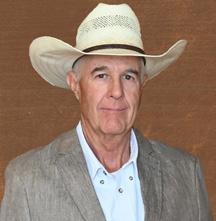


Frontier Feedyard
Jon Vanwey, Manager Spearman, TX office: (806) 882-4251 cell: (719) 251-2381
Stratford Feedyard
Pistol Audrain, Manager Stratford, TX office: (806) 396-5501 cell: (806) 753-7133
Burlington Feedyard
Logan Hardin, Manager Burlington, CO office: (719) 346-8532 cell: (620) 575-6702



Southwest Feedyard
Kacey Graham, Manager Hereford, TX office: (806) 364-0693 cell: (806) 316-8799
Hale Center Feedyard
Rusty Jackson, Manager Hale Center, TX office: (806) 879-2104 cell: (806) 773-9457
Ulysses Feedyard
Adam Gerrond, Manager Ulysses, KS office: (620) 356-1750 cell: (806) 390-9034
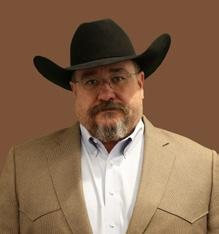



Wolf Creek Feedyard
Keith Brinson, Manager Perryton, TX office: (806) 435-5697 cell: (806) 282-7588
Wrangler Feedyard
Randy Shields, Manager Tulia, TX office: (806) 583-2131 cell: (806) 290-0559
Syracuse Feedyard
Phil Moreman, Manager Syracuse, KS office: (620) 384-7431 cell: (806) 340-4790



TSCRA Cattle Raisers Roundup hosts students for a one-of-a-kind experience.
By Karlee Busher
Photos by Audrey Acord
In the heart of East Texas, where pine trees tower above the earth and the rolling hills are blanketed with green grass, Texas & Southwestern Cattle Raisers Association led a group of aspiring beef industry leaders on an educational journey like no other.
The weeklong TSCRA Cattle Raisers Roundup, now in its third consecutive year, is an immersive introduction to the agricultural industry designed to equip high school juniors and seniors with skills and knowledge.
This year, 21 students gathered from across Texas and Oklahoma to participate in the event held July 22-26, where they engaged with industry professionals and explored the many facets of agriculture.
The tour featured 20 stops throughout East Texas and brought students face-to-face with financial institutions, cattle operations, meatpacking facilities, a large producerowned co-op, and a lumberyard — allowing them to experience vital pillars in production agriculture.
“Understanding each segment of the beef value chain is exceptionally important to crafting a deep understanding and appreciation for bringing beef to the center of the table,” says Emily Lochner, Texas & Southwestern Cattle Raisers Association executive director of leadership development and education.
At the beginning of the weeklong TSCRA Cattle Raisers Roundup, each participant was given a topic or perspective through which to view the comprehensive experience. Then, at the end of the week, attendees took part in a speech competition for scholarship dollars. This year’s winners were:
1st Place – Cooper Mau, Columbus
2nd Place – Ruth Nieto, Raymondville
3rd Place – Kaylin Jacobs, Brenham
4th Place – Avery Nelius, Round Top
5th Place – Camryn Craddock, Howe
6th Place – Emily Valicek, Houston
Among the stops during this year’s Cattle Raisers Roundup was the Kenley Mustang Prairie Ranch, located just outside of Crockett. There, Clay Kenley and his son, Travis, run a commercial Brangus cowcalf operation and timber business.
At the ranch, students were met with the handson job of processing calves alongside the family. The Kenleys carefully demonstrated each step of working fresh cattle, explaining how preconditioning adds value at the sale barn before letting students jump in to take their turn at cattle work.
“This was a chute-side classroom,” Lochner said. “We wanted to let students see how basic protocols can add value to calves through vaccinations, worming and even castrating bulls, while also demonstrating essential ranching skills like recordkeeping, tagging and ear notching.”
Cooper Mau, a returning participant from Colorado County, shared a few things he learned.
“I enjoyed the hands-on experience this year and learned how we as producers fit into the vast supply chain of agriculture,” Mau said. “Both camps were incredible and allowed me to make unique connections with producers across the industry and with my fellow campers that will undoubtedly serve me in the future.”
The hands-on experience set the tone for the week’s learning opportunities. Three additional cattle operations opened their gates to the students: J&J Cattle, Polk Land & Cattle and Cavender Ranches. The students also toured a Trans Ova Genetics facility.
Participants were given a look inside beef processing, packaging and marketing at the Texas A&M Rosenthal Meat Center, John Soules Foods, JT2 Beef and H-E-B. They also engaged with professional agribusiness services during stops at Capital Farm Credit, Producers Co-op and Washington Animal Vet Clinic.
Students created and registered their own brands during a visit to the Walker County Court House, and learned about how the cattle industry intersects with timber production at Steely Lumber.
Cattle Raisers Roundup is part of a larger initiative to create and develop future industry leaders. The experience was made possible by the TSCRA Leadership Development Foundation and the following sponsors: Ag Texas, Big Bend Trailers, Texas Farm Credit, Mix30 Liquid Feed, Capital Farm Credit, Harlow Cattle Co., Hunter Crow Family, Polk Land & Cattle, and Shelby Trailers and Flooring. T C
Karlee Busher was a summer intern for Texas & Southwestern Cattle Raisers Association. Originally from Winters, she is an agricultural communications graduate from Texas Tech University.

• Kylan Canon, Caldwell
• Laura Cooper, Detroit
• Camryn Craddock, Howe
• Kamryn Crosby, Hempstead
• Clayton Diebel, Victoria
• Krissie Feller, Canyon Lake
• Cal Heidelberg, Midland
• Mary Kate Hill, Nacogdoches
• Kaylin Jacobs, Brenham
• Cooper Mau, Columbus
• Madison Moseley, Early
• Tate Myers, Tioga
• Avery Nelius, Round Top
• Ruth Nieto, Raymondville
• Madison Perry, Madisonville
• Kailee Shaw, Bowie
• Paden Thigpen, Pearsall
• Emily Valicek, Houston
• Calob Walker, Moody
• Peyton White, Wink
• Kylie Whitley, Madill, Oklahoma
Texas & Southwestern Cattle Raisers Association Sept. 9 announced new association healthcare plans offered in partnership with Cattle Raisers Insurance and Blue Cross Blue Shield of Texas.
The member-only offer features four pre-negotiated plans to residents in Texas, New Mexico and Oklahoma.
“Finding the right health insurance coverage outside of the workplace can be difficult, which is a challenge for many of our members who are self-employed or operate independently,” said Carl Ray Polk Jr., Texas & Southwestern Cattle Raisers Association president. “These healthcare offerings are focused on ensuring our members have access to competitive insurance, while also providing impeccable value to our members who believe in the mission of our association.”
The member-only insurance offerings include: two flexible PPO plans allowing for insured participants to elect their provider of choice; a high deductible healthcare plan compatible with health saving accounts; and an HMO plan with fixed costs within a network of providers. Participants can also add vision and dental insurance to any association plan.
“I think a true benefit of these plans is that they have hassle-free enrollment, meaning no lengthy medical questionnaire, and offer competitive, pre-negotiated rates thanks to the ability to pool with other cattle raisers like themselves,” Polk said.
To be eligible for these plans, participants must be members of Texas & Southwestern Cattle Raisers Association prior to enrollment. To learn more about becoming a member or to request a quote online, visit cattleraisersinsurance.com.
Texas & Southwestern Cattle Raisers Association welcomed two interns Aug. 19, Breanna Beckendorf and Grant Mastin. Both are based in the Fort Worth office and contribute to various departments across the organization.
Beckendorf, originally from Kaufman, is a senior at Tarleton State University majoring in agricultural services and development, with a minor in agricultural communications. Throughout her time at Tarleton, she’s been involved with Collegiate Farm Bureau and the
Texas Jr. Red Angus Association, where she’s had the opportunity to network with people in the agricultural industry and grow as a leader. In high school, she was involved with her local FFA chapter, serving as a chapter and district officer, competing on contest teams and showing breeding heifers across the state.
The Beckendorf family currently runs a Registered Red Angus operation. After graduation, she plans to pursue a career centered around agricultural advocacy and youth outreach.
Mastin, of Jackson, Ohio, is an honors student and Neeley Fellow at Texas Christian University, where he is double majoring in finance and political science.


An avid equestrian, Mastin has experienced success in and out of the arena, winning more than 20 World and Reserve World Championships along with numerous year-end high point awards. He serves on the public policy committee for the American Quarter Horse Association; is a former first vice president for the American Quarter Horse Youth Association; and previously interned with the Ohio House of Representatives.
Mastin also founded Tackles for Tots, a nonprofit organization that has distributed more than 1,000 pairs of shoes to underserved children in the Appalachian region.
Texas & Southwestern Cattle Raisers Association and Boot Barn, the largest western and work wear retailer in the nation, announced Aug. 26 a new partnership offering a 20% discount to association members across Boot Barn storefronts in Texas, New Mexico, Louisiana, Oklahoma and Colorado.
The exclusive discount applies to hundreds of regularly priced products across top brands including Ariat, Carhartt, Hyer, Stetson and Twisted X.
The 20% member-only discount can be redeemed instore and is applied to regularly priced merchandise. The discount cannot be combined with other promotions and does not apply to select Wrangler denim, Uggs, Yeti or gift cards.
Texas & Southwestern Cattle Raisers Association members can learn more about the member-only discount and other benefits by accessing the website at membership.tscra.org.
Special Bull Offerings
Inconjunctionwithourregularsale. Bullswillsellat10:00a.m.Bullswillbefertility tested,meettrichrequirements,andreadytogotowork.
Thursday,October3@10:00a.m.–SanSaba SutphinCattleCoBullSale–70Bulls BooksareClosed!
Thursday,October10@10:00a.m.–SanSaba BooksareClosed!
Thursday,October17@10:00a.m.–SanSaba KnoxBrothersBullSale-Hereford&AngusBulls BooksareClosed!
Thursday,November7@10:00a.m.–SanSaba HalesAngusFarms–30AngusBulls
*Wednesday,November13@11:00a.m.–SanSaba BarberHerefordRanchandExpressRanchAngusBulls
Thursday,November21@10:00a.m.–SanSaba FeaturingSchaeferFarmsAngus&ShadyOaksFarmCharolaisBulls–Angus,Charolais&SimAngusBullsBooksareClosed!
Thursday,December19@10:00a.m.–SanSaba Leachman’sTexasFallStabilizerBullSale–60Bulls WeeklySalesHeldat11:00a.m. Special Replacement Female Sales
Wednesday,Oct.16@10a.m.–SanSaba 11thAnnualHillCountryYouthHeiferSale Fall “Best of the Best” Replacement Female Sale
Saturday,October26@10:00a.m.–SanSaba Offeringqualitypair,bredcows,bredheifers,andopenorexposedheifers. Don’tmissyouropportunitytobuysomeofthebestfemalesinthe country!Thesellerandbuyerofthetop-sellingfemalesineachofthe classeswillreceiveatrophy.Allcattlewillbefiveyearsofageoryounger!
Saturday,December7@10:00a.m.–SanSaba ConsignmentsWelcome!
WEEKLY SALES HELD AT 11:00 a.m.
Monday – Mason
Thursday – San Saba
Formoreinfoonabove salesoronlineviewing andbidding,pleasecall orvisitourwebsite.





Texas & Southwestern Cattle Raisers Association
Second Vice President Dan Gattis testified in August before the Texas House Committee on Agriculture & Livestock examining ways to protect against foreign ownership of farm, timber, pastureland and agriculture facilities in Texas and on the implementation of right to farm legislation passed last session.
Gattis, an attorney and rancher from Georgetown, emphasized the importance of common-sense solutions that recognize food security and national security.
“Ensuring that our working lands remain in the hands of those who are committed to our nation’s well-being is vital to maintaining control over our food supply,” he said.
Gattis also provided testimony on the implementation of right to farm legislation passed during the 88th Texas Legislature and Proposition 1 approved by the Texas voter’s last fall.
“For generations, ranchers across Texas have worked tirelessly to maintain the land, raise healthy livestock and contribute to the food security of our nation,” Gattis said. “One of the most pressing concerns in Texas is the increasing pressure from a growing population and urbanization.”
Legislation passed in 2023 prevents growing cities from placing restrictive regulations and fines on
agricultural operations and prevents legal actions against working farms and ranches.
Texas & Southwestern Cattle Raisers Association was instrumental in the success of right to farm legislation last session. Gattis’ testimony addressed the vital nature of these laws in protecting the agricultural community.
Texas & Southwestern Cattle Raisers Association and The Cattleman magazine received six awards at the 2024 Livestock Publications Council Contest, recognizing top publications, writers, graphic designers and livestock marketing specialists across the U.S.
The awards were presented Aug. 6 during the 2024 Agricultural Media Summit in Kansas City. Honors included:
• First place, general excellence: story package
• First place, in-depth reporting, single article
• First place, news story
• First place, four-color full-page ad
• Second place, single photo or graphic
• Second place, single article or layout
The award-winning publication is published monthly for its readers, comprised of 28,000 members of Texas & Southwestern Cattle Raisers Association. T C
Cattle Raisers PAC announced the availability of the 2024 general election voting to support Texas & Southwestern Cattle Raisers Association members heading to the polls.
The endorsed candidates are thought to best advocate for issues important to landowners, rural communities and cattle raisers.
To review the Cattle Raisers PAC voting guide and prepare for the upcoming general election, visit tscra.org/2024-general-election.
In key locations across Texas, Oklahoma and New Mexico, Helena has branches staffed with people who can provide landowners, ranchers and wildlife enthusiasts with all their management needs.
For more information, contact your local Helena representative or visit HelenaAgri.com.

Joe N. “Buzz” Thorp, a cowboy who has worked on ranches from Tennessee to Montana and New Mexico to Texas, will be the sixth recipient of the Ranching Heritage Association Working Cowboy Award presented during the annual National Golden Spur Award Honors Oct. 5 in Lubbock.
“The RHA Working Cowboy Award is designed to recognize an outstanding individual who makes his living primarily horseback, caring for livestock on a daily basis,” said Jim Bret Campbell, executive director of the Ranching Heritage Association and the National Ranching Heritage Center. “Buzz Thorp represents all of the facets of the working cowboy award. He is a cowboy’s cowboy, a teacher and a true representative of our cow-country values.”
The Ranching Heritage Association, a nationwide nonprofit membership organization supporting historical preservation and educational efforts through the National Ranching Heritage Center, presents the prestigious recognition annually. The award honors a working cowboy skilled in all aspects of ranch work and respected by the ranch crew and ranching community.
“More than a cowboy, Buzz is a cowman and a steward,” said Rob A. Brown, who grew up working with Buzz on R.A. Brown Ranch. “He is a horseman and a conservationist with expertise in so many areas that this letter could be filled merely listing them out. In my view, at the most fundamental sense, Buzz is a teacher.”
Thorp worked for his father, B.F. Thorp, in Throckmorton County while growing up. He also cowboyed for his uncles and cousins during that time. He worked for Muleshoe Cattle Co. while attending Texas Tech University, where he graduated with a degree in animal husbandry in 1954.
At 21 years old, Thorp managed Ridglea Angus Farms in Dickson, Tennessee, before returning to Throckmorton where he worked for R.A. Brown, McClusky and Birdwell ranches. He also ran his own cows and trained horses.
In 1974, Thorp became the cow boss at Spanish Creek Ranch in Gallatin Gateway, Montana. From there, he moved to manage yearlings on Jones Ranch at Wagon Mound, New Mexico. Thorp managed the McKee Ranch in Galisteo, New Mexico, before returning to Texas to manage ranches in Palo Pinto, Throckmorton and Baylor counties, including the Wagon Creek Spade Ranch outfit. Thorp managed that division of the Spade Ranches for 10 out of the 12 years he worked there.

Recognized as an outstanding stockman, horseman and teacher, at age 91, Thorp continues to be in demand for day work on neighboring ranches, including R.A. Brown Ranch. A notable horse trainer, Thorp has trained horses that have gone on to successful careers on ranches and in the arena, including for his grandson, Wesley Thorp, who is a two-time Professional Rodeo Cowboys Association heeling world champion.
“As his grandson, childhood stories were often told about his days working cattle and training horses,” Wesley said. “He’s [had an influence] on many great ranches such as Haythorn, Swenson and Browns. He is an all-around hand and one great cowboy. The impact he has had on my team roping career is one that will last forever.”
Texas & Southwestern Cattle Raisers Association Director Missy Bonds, of Bonds Ranch, near Saginaw was recognized in September with the inaugural True Texas CattleWoman distinction, given by Texas Coastal CattleWomen.
The award was presented during the group’s annual fundraiser luncheon and style show in Houston. Linda Galayda was also awarded the Outstanding CattleWoman distinction.

Texas Coastal CattleWomen work to raise funds that further their mission of educating others and bringing awareness to the best protein — beef. The organization has raised and gifted more than $1 million toward that goal through scholarships and donations of beef since its inception in 1983. T C


Upcoming Ranching 101 webinar prepares buyers for sale day.
Join Texas & Southwestern Cattle Raisers Association for this month’s Ranching 101 at 1 p.m., Tuesday, Oct. 15.


During the hour-long Zoom webinar, participants will hear from the owner and founder of Data Genie LLC, a comprehensive data and genomic management service dedicated to helping agricultural operations succeed. Interested members can register by scanning the QR code below.
With a passion for engaging with producers of all breed affiliations, Leoma Donsbach provides valuable insights on incorporating DNA and genomic testing technology to optimize the herd’s genetic potential. She says she enjoys working alongside customers to submit, provide and deliver quality data and information.
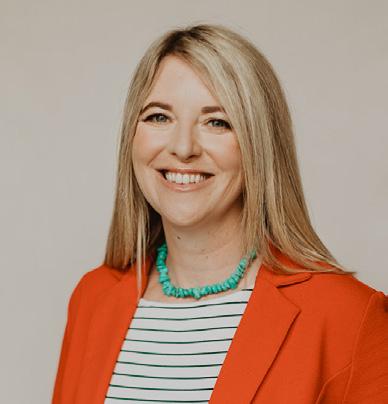
Donsbach discovered her love for cattle genetics and data management during her time at California Polytechnic State University at San Luis Obispo, where she worked at the beef unit and served as the bull test secretary.
After college, she started her career at the American Simmental Association. During her 12 years with the association, she served in various roles, but she found her niche in DNA and data collection for total herd reporting.
Her primary focus was to educate producers on what programs are best suited for their operation based on short- and long-term goals. From this experience, Donsbach identified a need and potential business opportunity, leading to the 2015 creation of Data Genie LLC. T C

Join or renew your membership today.
Member benefits include the support of TSCRA Special Rangers, government relations advocacy, educational programs, networking and social events, member-only discounts, The Cattleman magazine and phone app, and insurance services.

To learn more about membership, scan the code above or visit TSCRA.org.



The TSCRA Business Partner Program allows companies and organizations whose values and mission align with TSCRA to demonstrate their support to the cattle industry. Thank you to our current business partners.
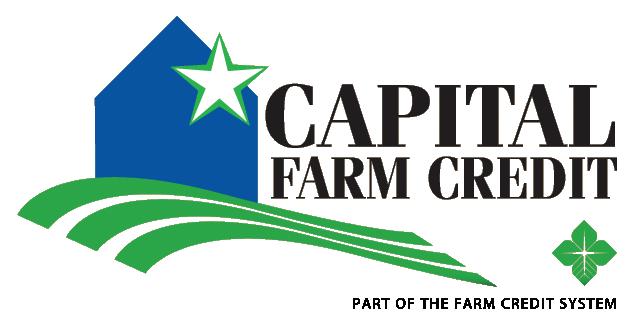








KATHLEEN HARTNETT WHITE, 74, of Rosanky, died Aug. 6.
Born in Kansas, White would go on to earn bachelor’s and master’s degrees from Stanford University, and a Ph.D. from Princeton.
White worked for Nancy Reagan at the White House in the first Reagan Administration. She then worked for the National Cattlemen’s Association as director of private lands and environment.
On Aug. 13, 1993, she married Beau Brite White, a Texas & Southwestern Cattle Raisers Association honorary director. They originally lived on the Brite Ranch, a historic ranch in Presidio County.
In 2000, White was appointed to the Texas Water Development Board by then-Gov. George W. Bush. A year later, Gov. Rick Perry appointed her as chair of the Texas Commission on Environmental Quality.
In 2008, Gov. Perry appointed her to the board of directors of the Lower Colorado River Authority.
That year, White also joined the Texas Public Policy Foundation as the Distinguished Senior Fellow-inResidence and Director of the Armstrong Center for Energy and the Environment.
Her writings were widely published, including her book Fueling Freedom: Exposing the Mad War on Energy, which defended the role of fossil fuels in U.S. history and economic expansion.
White is survived by her husband, eight nieces and nephews, and many friends and former colleagues. T C




Mason Solis of Wilson County arrested on felony theft charges.
Texas & Southwestern Cattle Raisers Association Special Ranger Matt Sigur conducted an investigation resulting in the arrest of Mason Solis, a Wilson County man charged with felony theft of livestock.
The charges come after Solis failed to pay for cattle from the Live Oak Livestock Auction, which led to a widespread investigation uncovering a complex livestock theft scheme spanning six Texas counties.
In March, Live Oak Livestock Auction reached out to Texas & Southwestern Cattle Raisers Association. The auction barn had sold 35 head of cattle, but never received payment. The auction barn was given a hot check from Solis for the livestock, who took the cattle from the sale barn despite the failed payment.
Sigur promptly alerted fellow Texas & Southwestern Cattle Raisers Association special rangers in the surrounding counties about the fraudulent scheme. Within weeks, Joe Aguilar Jr., Steve Martin, Robert Fields and Todd Jennings all reported similar incidents from auction barns across South Texas.



The special rangers quickly assembled, securing court orders, documents and statements. As the investigation progressed, evidence indicated Solis executed the same scheme repeatedly — stealing 251 head of cattle in total. Warrants were issued by Gillespie, Gonzales, Karnes, Lavaca, Live Oak and Starr counties.
Efforts to locate and arrest Solis initially failed when the special rangers discovered he had left his Wilson
County home. However, thanks to the vigilance of the Wilson County Sheriff’s Office, Solis was arrested June 22. He was charged with nine counts of felony theft, amounting to more than $375,000.


Breanne Mosley, Solis’ wife, was also arrested and charged with one count of felony theft for her involvement in the scheme. This case is separate from Solis’ charges and remains ongoing.
Texas & Southwestern Cattle Raisers Association would like to thank the Wilson County Sheriff’s Office and Detention Center for their joint efforts in this case and ensuring all warrants were served.
TSCRA special ranger assists investigation leading to the arrest of Douglas Leon Williams.
Douglas Leon Williams, a former Lipscomb County resident, was arrested on felony charges of cruelty to animals after an investigation led by Texas & Southwestern Cattle Raisers Association Special Ranger Ben Eggleston and the Ellis County Sheriff’s Office.
In August 2022, an employee of a ranch located in Ellis County, Oklahoma, discovered a horse owned by the ranch had been shot and killed.
Eggleston and the Ellis County sheriff’s deputies recovered evidence linking Williams to the crime.

Reports and evidence were submitted to the Ellis County District Attorney’s Office, which reviewed the investigation and issued a warrant for Williams’ arrest for cruelty to animals.
Williams was apprehended Aug. 5 in Cape Girardeau County, Missouri. He waived extradition and was taken into custody by the Ellis County Sheriff’s Office. Williams’ bond was set at $10,000.
Texas & Southwestern Cattle Raisers Association would like to thank the Ellis County Sheriff’s Office, Ellis County District Attorney’s Office, Missouri State Highway Patrol, U.S. Marshal Service and the Cape Girardeau County Missouri Sheriff’s Office for their assistance with this case. T C

PROTECT YOUR BOTTOM LINE AGAINST REDUCED APPETITE AND WEIGHT LOSS.

Stress happens every time cattle are handled, transported or commingled. Cortisol levels increase from stress impacting appetite, health and weight gain. Studies demonstrate FerAppease® reduces the impact of stress on calves treated:*
• Reduced cortisol levels
• Improved appetite
• Increased weight gain

• Improved immunocompetence
• Improved health response, better recovery
• Decreased mortality
*Conducted by Dr. Reinaldo F. Cooke, Texas A&M University
HEALTHIER & HEAVIER CALVES = MORE PROFIT


Sorrel mare missing in Oldham County.
Texas & Southwestern Cattle Raisers Association
Special Ranger Chris Ward reports a 17-year-old sorrel mare missing from a pasture north of I-40 in Oldham County. The registered mare has a star- and tulip-shaped strip, and a white spot on her left wither. She was last seen July 10. Anyone with information on this case is urged to contact Ward at 806-205-0119.
Nine Angus cows and two Angus bulls missing from Wise County.
Texas & Southwestern Cattle Raisers Association
Special Ranger John Vance reports nine Angus cows and two Angus bulls missing from a property off Forest Road 942. Cattle panels were moved around an oil well June 2, along with five cows and one bull missing. An additional four cows and bull were stolen from the same property and entry point July 5. The cattle have a “JH” branded on their right hip. Anyone with information on this case is urged to contact Vance at 903-438-6251.
Cattle missing in Stephens County.
Texas & Southwestern Cattle Raisers Association
Special Ranger Zach Havens reports seven Herefordcross bulls, two Charolais-cross bulls, an Angus bull and a red heifer missing from a property off County Road 105. The cattle are described as:
• Seven 18-month-old brown Hereford-cross bulls weighing 600 to 700 pounds. They have no brands, markings or ear tags.
• A white Charolais-cross bull, weighing approximately 800 pounds with no brands or ear tags.
• A yellow Charolais-cross bull, weighing approximately 800 pounds with no brands or ear tags.
• A black Angus bull with a “C” branded on his left shoulder.
• A red heifer with a white spot on her forehead, and no brands or ear tags.
The cattle were last seen May 28. Anyone with information on this case is urged to contact Havens at 254-396-1747.
Equipment stolen in Hunt County.
Texas & Southwestern Cattle Raisers Association
Special Ranger Robert Pemberton reports a John Deere tractor, Lincoln Eagle welder and several other pieces of equipment stolen from a property near I-30 in Greenville. The items were stolen June 12 and are described as:
• John Deere tractor, serial No. 1PY5075EJLM118543;
• 520 M loader, serial No. 1P0520MXVLD069676;
• AB12 bale fork, serial No. 1XFAB12GCM0019759;
• Red Lincoln Eagle welder, 10,000 plus;
• A black metal cart wagon; and
• Five red gas cans.
Anyone with information on this case is urged to contact Pemberton at 903-450-3900.
Two heifers missing in Delta County.
Texas & Southwestern Cattle Raisers Association Special Ranger Bo Fox reports two black bred heifers missing from a property off County Road 2130 near Cooper. The 2-year-old heifers have a “- C” branded on their right hip and a “79” or “77” branded underneath. They were last seen June 30. Anyone with information on this case is urged to contact Fox at 903-348-9638.
Cattle missing in Henderson County.
Texas & Southwestern Cattle Raisers Association
Special Ranger Darrel Bobbitt reports six black cows and one white-faced red calf missing from a property off Highway 198 in Mabank. The cows may have an “A” branded on their left hip and were last seen July 16. Anyone with information on this case is urged to contact Bobbitt at 936-222-2144.
Four-wheeler, flatbed trailer, air compressor and tools stolen from business in Brazoria County.
Texas & Southwestern Cattle Raisers Association Special Ranger Brent Mast reports a missing Honda Rubicon four-wheeler, flatbed trailer, air compressor and tools stolen from a business shop off FM 2917 in Alvin. The four-wheeler is desert camo, and the last four numbers of
the VIN are 0683. The four-wheeler was on a 10-foot Carry All flatbed trailer, which was also stolen. The tools and air compressor, which is a yellow, portable model, were stolen from two vehicles in the business shop. The theft occurred June 27 after business hours. Anyone with information on this case is urged to contact Mast at 936-714-6619.
John Deere tractor stolen in Jefferson County.
Texas & Southwestern Cattle Raisers Association
Special Ranger Mike Boone reports a 2012 John Deere tractor 6430 model stolen from a property off Old Sour Lake Road near China. The serial number on the tractor is L06430H551555. The tractor was stolen the night of June 12. Anyone with information on this case is urged to contact Boone at 409-658-5725 or the Jefferson County Sheriff’s Office at 409-835-8411.
Southwest Gooseneck bumper-pull trailer and welding equipment stolen in Gonzales County.
Texas & Southwestern Cattle Raisers Association
Special Ranger Robert Fields reports a 2014 Southwest Gooseneck bumper-pull welding trailer, Miller 302 Trailblazer welder and a Miller Bobcat 225 welder missing from a job site off County Road 353 in Gonzales.
The VIN No. on the Southwest Gooseneck trailer is 1S9UB1426ES683127, and it is customized with a 5-foot HD bulkhead, three receiver tubes welded on the rear, 1/4 inch slick plate floor and a HD 8-inch channel fenders. The items were last seen July 26 and were discovered missing July 27.
Cattle missing in Gonzales County.
Fields also reports seven crossbred cows missing from a property off FM 466 along the Guadalupe River in Gonzales. The cows are branded with a “Lazy 8” on their left hip. They were last seen July 1.
Gray Brahman bull missing in Victoria County.
The special ranger reports a gray Brahman bull missing from a pasture off Fordtran Road in Victoria County. The 6-year-old bull weighs approximately 2,200 pounds and is branded with a “Covered L” on his right hip and a “Cloverleaf” on his lower right shoulder. He was last seen in mid-June.
Charolais bull missing in Lavaca County.
Fields also reports a 3-year-old Charolais bull missing from a property along County Road 15 in Hallettsville. The bull is branded on the left hip with a connected “NP” and was last seen June 22. Anyone with
information on these cases is urged to contact Fields at 361-207-5207.
Bull missing in Webb County.
Texas & Southwestern Cattle Raisers Association
Special Ranger Joe Aguilar Jr. reports a red Beefmaster bull missing from a property off U.S. Hwy 83. The bull has “2 over J” branded on his left hip. He was last seen in January. Other livestock were found shot and killed at same location where the bull went missing. Anyone with information on this case is urged to contact Aguilar at 956-513-0297. T C
TSCRA offers a cash reward for information leading to the arrest and/or grand jury indictment of individuals for theft of livestock or related property. Anonymity is guaranteed. To provide information, call the Operation Cow Thief tip line at 817-916-1775.



Callicrate Banders deliver a high-tension, drug-free solution that ensures precise tension for complete blood flow ligation and effective pain suppression. No other banding method compares to their effectiveness.





Story by Kristen Brown
Photos by Kayla Jennings
Opportunity for accelerated genetic gain and an extended working life of a bull are top benefits associated with utilizing yearling bulls within a herd.
Jason Banta, Ph.D., a beef cattle specialist with Texas A&M AgriLife Extension, explained special considerations for managing yearling bulls on a recent TSCRA Talk podcast episode.
Generally speaking, yearling bulls are defined as those between 13 and 15 months old. Puberty often occurs around 300 days, varying slightly based on breed. Sexual maturity is typically reached when the scrotal circumference is 30 to 32 centimeters, and a breeding soundness exam reveals 50 million sperm cells present with 30% motility and 70% normality.
“The interesting thing that may surprise a lot of producers is most bulls will go from puberty to sexual maturity within about 45 to 60 days,” Banta said.
The beef cattle specialist shared specific recommendations to help make the most of the younger members of a breeding lineup.
Developing bulls in a slow and steady manner helps build an ideal body condition score without excess fat, setting them up for long-term success. Yearling bulls have nutritional needs that differ from more seasoned bulls.
“For yearling bulls, I’d like to see them in a body condition score 5.5 to 6 going into the breeding season,” Banta said. “For older bulls, a body condition score of 5 to 5.5 is plenty. If you are buying bulls that are a little over conditioned, try to purchase them 90 days or more before you need them, so you can get a little bit of that extra weight off before breeding season.”
No matter the body condition, it is important to allow time for new bulls to acclimate to their new environment and conditions. Banta said to consider more than climate and terrain when calculating bull-to-cow ratios, accounting more conservatively for less experienced sires.
“If developed properly, a yearling bull to 15 cows would be an appropriate ratio in my mind, in most situations,” he said. “A 2-year-old bull, about 30 cows in the same conditions; and then 3- to 7-year-old bulls about 40
cows. These rates would apply in situations where three to 15 acres are needed per cow-calf pair.”
When developing a plan to disperse bulls across the ranch, Banta recommended separating yearling bulls from older bulls or bulls significantly different in size.
“The reason is we have a much greater chance of injury in those situations, and those yearling bulls would be at the bottom of the pecking order, so they’re probably not going to get much breeding done if they’re mixed with older bulls,” he explained. “We want to keep bulls of similar sizes and ages together during the breeding season.”
To minimize conflict and help establish hierarchy, Banta recommended grouping breeding bulls together prior to breeding season.
As yearling bulls are turned out, monitoring their breeding activity will prove beneficial to ensure they have a strong libido with a desire to check and mount cows. If possible, note which cows the bull breeds and observe whether those cows come back into heat.
“If those cows are coming back into heat, that can be an indication there may be a problem,” he said.
Similarly, it is important to keep an eye out for injuries due to fighting or other causes. If developed properly, yearling bulls can sustain a 60- to 90-day breeding season. The yearling bull may end the season half a condition
score lower than older bulls, as younger bulls tend to be extremely active in how many times they mount a cow.
“If you do see a bull that’s really struggling, then we may pull him out a little sooner in that situation, but most of the time that’s not needed,” Banta said.
He cautioned against pulling a bull after 30 days and daily feeding 10 to 15 pounds of grain.
“If you want to bring the bull up, let him rest and give him a little bit of grain or just good pasture, that’s fine,” he said. “We don’t want to take those bulls from not having any grain to all of a sudden having 10 to 15 pounds of grain a day, because that can cause acidosis problems. One study from Australia reported reduced fertility of bulls when acidosis or subacute acidosis occurred.”
Post breeding season, yearling bulls need to continue to grow and develop at a steady pace with quality pasture if available, or hay plus a small amount of feed.
“In most situations, I wouldn’t feed more than about half a percent of their body weight with some type of an energy or energy protein supplement,” Banta said. “But personally, in our family operation, I typically do not feed yearling bulls after they come out of the breeding season. We just put those bulls on good quality pasture, and then they’re ready to go next year for that second breeding season.” T C
In most situations, where three to 15 acres are needed per cow-calf pair, Texas A&M AgriLife Extension Beef Cattle Specialist Jason Banta, Ph.D., recommended the following bull-to-cow ratios.
15 cows
2-Year-Old Bull
30 cows
3- to 7-Year-Old Bull
40 cows

Texas A&M AgriLife Extension experts offer advice for rebuilding the herd.
By Kay Ledbetter Photos courtesy of Texas A&M AgriLife
At the current time, conomic and climate condition forecasts for the coming months and years cast some doubt on the proposition of expanding the cow herd rapidly, according to Texas A&M AgriLife Extension Service experts.
Ranchers should expect volatility in the markets and weather as they make plans to expand their cow herds.
That was the message for Texas beef producers at the 70th annual Texas A&M Beef Cattle Short Course, hosted Aug. 5-7 by AgriLife Extension and the department of animal science at Texas A&M College of Agriculture and Life Sciences.
More than 1,800 attended the annual event, which was themed “Rebuilding the Cow Herd.”
Texas ranchers find themselves in a similar situation as the drought of 2011 to 2012, which led to deep culling and herd consolidations. But not all is the same this time.
With some of the lowest cow numbers in the U.S., the market indicates now is a good time for ranchers to start rebuilding their cow herds. But careful consideration is needed to ensure mistakes are not repeated, said Jason Cleere, Ph.D., conference coordinator and AgriLife Extension beef cattle specialist in the department of animal science.
“We wanted to provide tools for ranchers to begin to decide what they can afford for replacement heifers,” Cleere said. “The short course provided a lot of scientific and experiential knowledge ranchers took home and hopefully can apply to their operations with short-term and long-term success.”
David Anderson, Ph.D., AgriLife Extension livestock marketing economist and professor in the department of agricultural economics, said a decade ago, there were record high calf prices, and the expansion took place faster than many thought possible.
Anderson cited several reasons for slower expansion, including higher input costs, interest rates and discounts on the futures market that are keeping the return over cash costs low.
“Even with record high prices, that doesn’t correspond to record high returns,” he said. “Economically, we’ve seen no real indication of expansion because the returns haven’t been there to make it worthwhile.”
Anderson said the last time around should remind ranchers they can pay too much for replacements if they aren’t careful.
“The calf crop and productivity are the most important factors going forward,” he said. “If the cow doesn’t make a calf every year, that takes away from what I can pay. Replacements this time will be the most expensive ever, at record highs. But so are the calf prices.”
He said it is important to know operational costs and the factors that could determine what price is too high.
“You don’t want to still be paying for those replacements when they are long gone,” Anderson added.
One key part of the equation for herd rebuilding is selecting replacement females — and there are about 16 options ranchers could make, said Ron Gill, Ph.D., AgriLife Extension beef cattle specialist and professor in the department of animal science, based near Stephenville.
Ranchers must consider whether they want to retain ownership of their own heifers or buy lightweight or heavyweight heifers, bred heifers, first-calf pairs, threein-one sets, older or younger bred cows, pairs of cows and calves of different ages, or open females that all range in prices and availability.
“Looking at these different options may not be the normal way to do things, but this is a unique scenario we are in,” Gill said.
Some things for ranchers to consider when determining the best females to rebuild their herd include environmental adaptability, mature size, calving difficulty and marketability.
“You want to build in some flexibility to your beef system to prevent forced management,” Gill said. “Last time, we spent a lot of money on females in rebuilding, and then some folks were forced to sell a lot of them pretty quick before they had them paid off.”
Gill weighed in on some of the key economic management aspects of that selection process:
• What is the quantity and quality of the animals available? That helps determine what you can select.
• What is your initial investment cost? That can be a pretty big number, so you want to make sure you get it right.
• Development phase — How long until the first calf is on the ground, and what will it cost? Should we pay more upfront for an animal that will produce faster?
• Rebreeding potential — Sometimes, we grossly underestimate the culling percentages of purchased cattle. In my experience, within three years, 50% will be gone. You need to be able to cull them to make the upfront cost work. If they can’t make that run, their cost must be covered by the remaining cattle.
• Market flexibility — If the weather turns against you, how easy will it be to get rid of them at the price needed? For instance, if you buy large heifers and the market or weather turns, you can sell them as feeder cattle. Or you can sell them to someone else as breeding females.
Gill said some other factors ranchers should consider are genetic potential, longevity, dystocia, weaning weight, nutritional requirements and cull rate.

Timing to get a calf on the ground is everything in this rebuilding phase, Gill said.
Retaining heifers may mean their first calf won’t drop until the market starts to change, he said. So, buying a higher-priced female that will have a calf before that might be better. However, that’s where those risk factors must be weighed to avoid losses in the long run.
“If you look at it from a purely economic standpoint, you might look at selling your heifers and buying a female to run during this period that will sell calves for you,” Gill said. “Then you can purchase lightweight heifers and be ready to breed.”
There’s also the choice of buying bred heifers. There’s a higher cost involved in that, but they can put a calf on the ground sooner.
“You need to be considering at least a three-year period, and you need to raise heifers you have the most confidence in,” Gill said. “That development phase, the cost to grow them and being able to participate in this high market might be where you want to rethink some things.
“But also, if you chase some fad or opportunity, you can mess up your whole system. So, if you have a good system, don’t necessarily go chase rabbits.” T C

More than 1,800 attendees participated in this year’s Texas A&M Beef Cattle Short Course. Pictured right, Jason Cleere, Ph.D., associate professor in the department of animal science and Texas A&M AgriLife Extension Service beef cattle specialist, said the event provides tools for beef producers determining how to move forward after herd culling over the past two years.

By Kent Ferguson
Avine-like shrub, Pigeonberry is a native, warmseason perennial sprouting from a woody base.
It grows on many different sites throughout the southern U.S., including every region of Texas except deep East Texas. It is most often found in river and creek bottoms.
Also called bloodberry, rougeplant and coralito, Pigeonberry is closely related to the plant known as Poke-salad or Pokeweed.
The plant:
• Is dark green and reaches more than 3 feet tall, branching at the nodes.
• Has smooth, bright green leaves with wavy margins. They are lanceolate to ovate, alternating in position and up to 3 inches tall.
• Produces flowers that are spiked and a quarter-inch wide, ranging from red and pink to white.
• Produces numerous single-seeded berries that are bright red or orange. Mature berries are found on the bottom of the spike, while flowers are at the top. The red berries have been used as a source for red dye.
Pigeonberry is toxic when ingested by humans, but it does not bother livestock or wildlife. On occasion, the plant is consumed by cattle, and sheep, goats and whitetailed deer enjoy the browse.
Early growth leaves can contain up to 30% crude protein. Doves, quail, turkey and many songbirds will seek out the fruit. T C
Kent Ferguson, a retired rangeland management specialist from the USDA Natural Resources Conservation Service, provides plant identification photo stories to help ranchers













Mature weight is an often-used term in the beef industry, especially in heifer development. It is also important when estimating nutrient requirements, animal performance and ranch efficiency.
But what does achieving mature weight really mean?
From a physiological perspective, mature weight is defined as the weight of an animal at which point additional gain consists mostly of fat with limited additional protein gain.
From a practical standpoint, mature weight is the weight of cows and bulls that are 5 years old or older with a body condition score of 5. Cows should also be open or in the first trimester of pregnancy when this measurement is determined. T C













By Kristen Brown
The Texas Beef Checkoff’s origin story begins more than two decades ago. As litigation in the early 2000s brought uncertainty for the national Beef Checkoff, Texas cattle producers began building the framework for an additional program in the Lone Star State.
A favorable ruling by the U.S. Supreme Court stated the national Beef Checkoff was, in fact, constitutional, and efforts toward establishing the Texas Beef Checkoff continued to progress.
During this time, inflation had caused wide fluctuations in revenue to the 1986 national Beef Checkoff dollar, which was worth only 44 cents of purchasing power in 2013, and a significant reduction in cow numbers amid drought. The need for increased funding for beef education, promotion and research became apparent.
Texas cattle raisers, who represented the largest cattle-producing state and the second largest consumer population in the nation, cast their vote in June 2014 with the majority in favor of a $1 per head mandatory state Beef Checkoff with a refund option. The program, managed by Texas Beef Council and overseen by the Beef Promotion and Research Council of Texas, became effective Oct. 1, 2014.
Richard Wortham, who served as the council’s executive vice president from 1996 to 2020, joined the TSCRA Talk podcast to discuss the early conversations
surrounding a state Beef Checkoff and the work that took place to establish the additional assessment.
“We had to think about what could be, versus what it is right now,” Wortham recalled. “To me, it’s all about the vision, the strategy of being able to approach how you could encourage and educate producers about the benefits and the value of not only the national Checkoff, but also the possibility of what a state Checkoff could do, how it could be enhanced, how the money could be used.”
Wortham said that with the passage of the Texas Beef Checkoff, Texas Beef Council was able to execute programs only dreamed of two to three years prior.
Molly McAdams, Ph.D., who took the helm as executive vice president of Texas Beef Council in 2020, also joined the TSCRA Talk conversation, highlighting current programs and research made possible by the additional funds through Texas Beef Checkoff.
McAdams began by pointing out how enjoying beef is an inherent part of being Texan — from an insatiable appetite for barbecue to an affinity for burgers, with ground beef accounting for more than 50% of sales volume last year.
She touted the Beef Loving Texans brand, an initiative created under Wortham’s leadership, as the vehicle allowing Texas Beef Council to create lasting connections




with consumers. The online community provides recipes, cooking tips, stories and expert nutrition information.
In 2023, Beef Loving Texans reached its audience 203 million times with more than 1 million online recipe views.
Showcasing beef on television was one of the first initiatives possible with additional resources under the Beef Loving Texans brand. With 3 million-plus views and 620,000 hours watched, the show, BBQuest, merges entertainment and education, known as edutainment.
After the first two seasons spotlighted the faces and places behind Texas barbecue, season three went beyond the pit and visited local beef producers who make it all possible.
Texas Beef Council highlighted operations including Saunders Ranch, J.D. Hudgins Inc., Caney Creek Ranch and Graham Land & Cattle to emphasize themes like animal welfare, land management, innovation and ranching heritage.
“I see edutainment, especially when it comes to the cattle industry, as something consumers are craving,” McAdams said. “They’re not being pushy or nosy. They have a true desire to understand what happens in ag lifestyles.”
Now more than ever, consumers rely on nutrition and health professionals for advice, though they often know little about beef or how it is raised.
The first-of-its-kind Medical Office Outreach program through Texas Beef Council relies on peer-reviewed research, funded by the Beef Checkoff, to strengthen beef’s reputation among medical and health providers. A team of council representatives uses this information to visit directly with physicians about how beef fits into healthy, sustainable lifestyles.
“In the last two years alone, these efforts have reached more than 1,100 doctors with 80% being less likely to limit beef to their patients after hearing information from one of our reps,” McAdams said. “This audience has long been a priority for us, but additional resources have allowed us to elevate our efforts here in Texas.”
Additionally, Texas Beef Council’s new Sports Nutrition Game Plan, which is geared toward high school and college athletes, highlights beef’s role in fueling training, performance and recovery. The online platform provides videos, recipes, meal plans and tips that place beef at
the forefront as a high-quality protein source. McAdams noted that the program, still in its infancy, has received positive responses among the athletic community with 500-plus coaches, athletic directors and trainers signed up for the resource.
At the heart of everything Texas Beef Council does is research. It is the foundational component to providing information and program direction.
“Our board has always been deeply focused on earmarking investments for research, whether it’s information about nutrition, the sustainability of our product or how cattle are raised,” McAdams said. “In order for us to have a credible approach with today’s consumer, it has to be backed in research.”
To continue showcasing beef’s role in a healthy diet, the Beef Checkoff is actively involved in human nutrition research to understand and communicate sciencebased recommendations supporting beef consumption.
For example, every five years the industry advocates to ensure beef is accurately represented in the Dietary Guidelines for Americans, which impact all federally funded nutrition programs, like school meals, and are the basis for most health professionals’ recommendations.
The continued work in this area is critical and resulted in the 2020 to 2025 Dietary Guidelines including lean beef as a healthy complementary food for babies and toddlers.
McAdams noted the decision makers of the Texas Beef Checkoff, the board of directors, make up the grassroots leadership representing all Texas cattle producers.
“They come to the table wired with the leadership ability to make practical decisions on behalf of the entire industry. And that is why we succeed,” she said.
“We’re constantly looking for the tools that will get us closer to the consumer and constantly challenging ourselves, not only to be better at what we do, but also to be more efficient at what we do. We want to make sure that every single program that we are participating in or investing in has a powerful return on those Checkoff dollars.” T C
• $1 per head assessment on all cattle sold in the state of Texas.
• All information published by the state and national Checkoff must be approved by USDA.
• Twenty directors are nominated by state cattle and beef organizations, including Texas & Southwestern Cattle Raisers Association.

Upcoming bull sales and private treaty offerings throughout the Southwest.








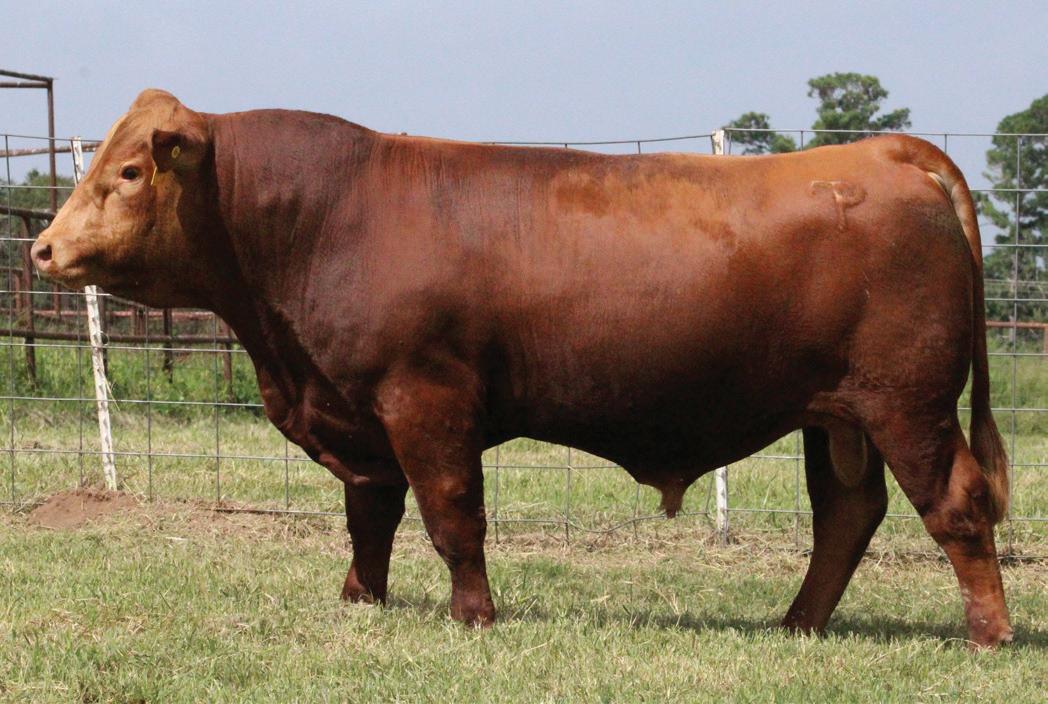










55 SIMMENTAL AND SIMANGUS™ BULLS
• 13-24 months of age
• Most are AI Sired by some of the top Simmental and SimAngus™ sires in the industry
60 SIMMENTAL AND SIMANGUS™ FEMALES
• Breds and pairs including 10 mature cows
• 10 open yearling heifers ready to breed
• Many are AI Sired and selected out of the heart of the 7P program
40 SIMBRAH FEMALES
• Bred Heifers plus 5 open Heifers ready to breed


• Most are ½ Simmental ½ Brahman heifers resulting from the mating of productive 7P Ranch Simmental cows to elite Brahman sires
• Most are registered with the American Simmental Association and also eligible to be Golden Certified registered with the American Brahman Breeders Association
served at 12:00











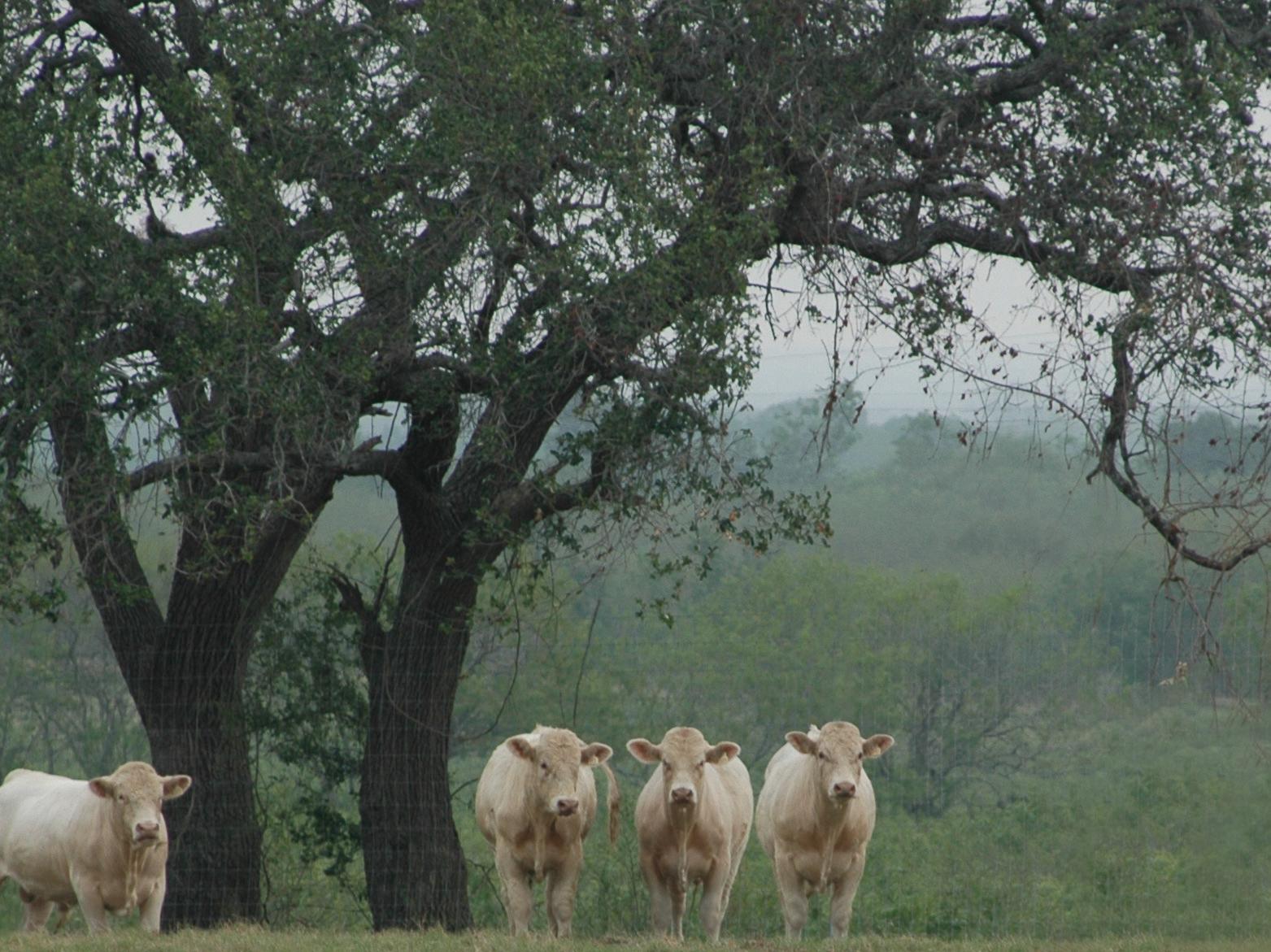


Our Angus Smar tBulls® are mature. They can breed more cows. They can handle the heat.
A n d , t h e y d o n ’ t n e e d p a m p e r i n g . 1 - 8 0 0 - 5 4 8 - 2 8 5 5

Bulls A S o u t h e r n T h i n g f o r O v e r 5 0 Y e a r s






















This powerful Fireball son out of a Quantum dam may be one of the best bulls we’ve sold to date. Physically, he is truly a specimen! His data indicates he has the genetic potential to be an Angus “Changemaker.” Calving ease, growth, moderate stature and top of the breed for end-product merit place him in an elite category of young Angus sires.




Bulls Bred for Performance but Raised on Limited Feed and Grass FERTILITY • EFFICIENCY • DOCILITY • SOUNDNESS • LONGEVITY
OCTOBER 14, 2024 12:30 P.M. AT THE RANCH SELLING: 70 Coming 2-year-old Bulls (50 Horned & 20 Polled) 20 Fall-Calving Cows (most calved by sale day) • 15 Spring-Bred Heifers


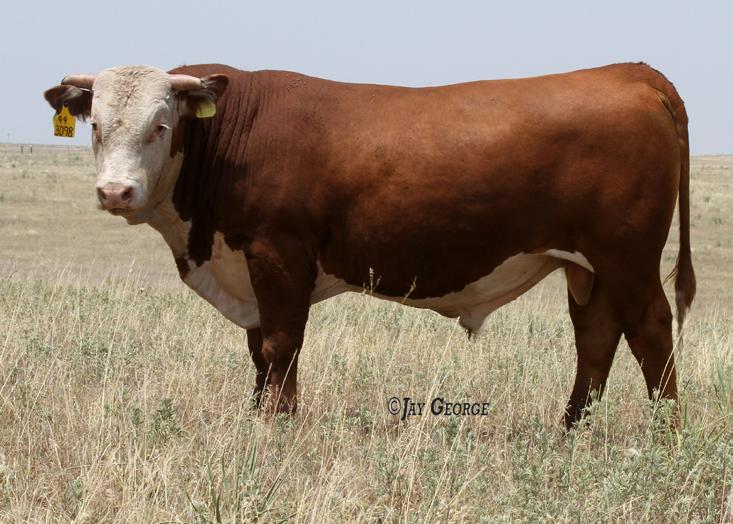
4.7










AHA P44437981 • DOB 2/23/23 • Polled

Belle Air E133 ET x Innisfail WHR X651/723 4013 ET CED +1.5 /
+3.3 /

+564 /




+183 Ranks in the top 1% of the Hereford breed for WW, YW, SC, Marbling and $CHB! We have tremendous confidence in this top young son of BR Belle Air E133 and are looking forward to seeing his calves on the ground next spring. Be our partner in San Saba!








AHA P44488084 • DOB 7/5/23 • Polled
BR Ringo 8017 x BR Bold Gold 4012 ET
CED – 0.2 / BW +3.2 / WW +64 / YW +103 / MM +28 / MG +60
REA +.84 / MRB +.17 / BMI +342 / BII +422 / CHB +130



































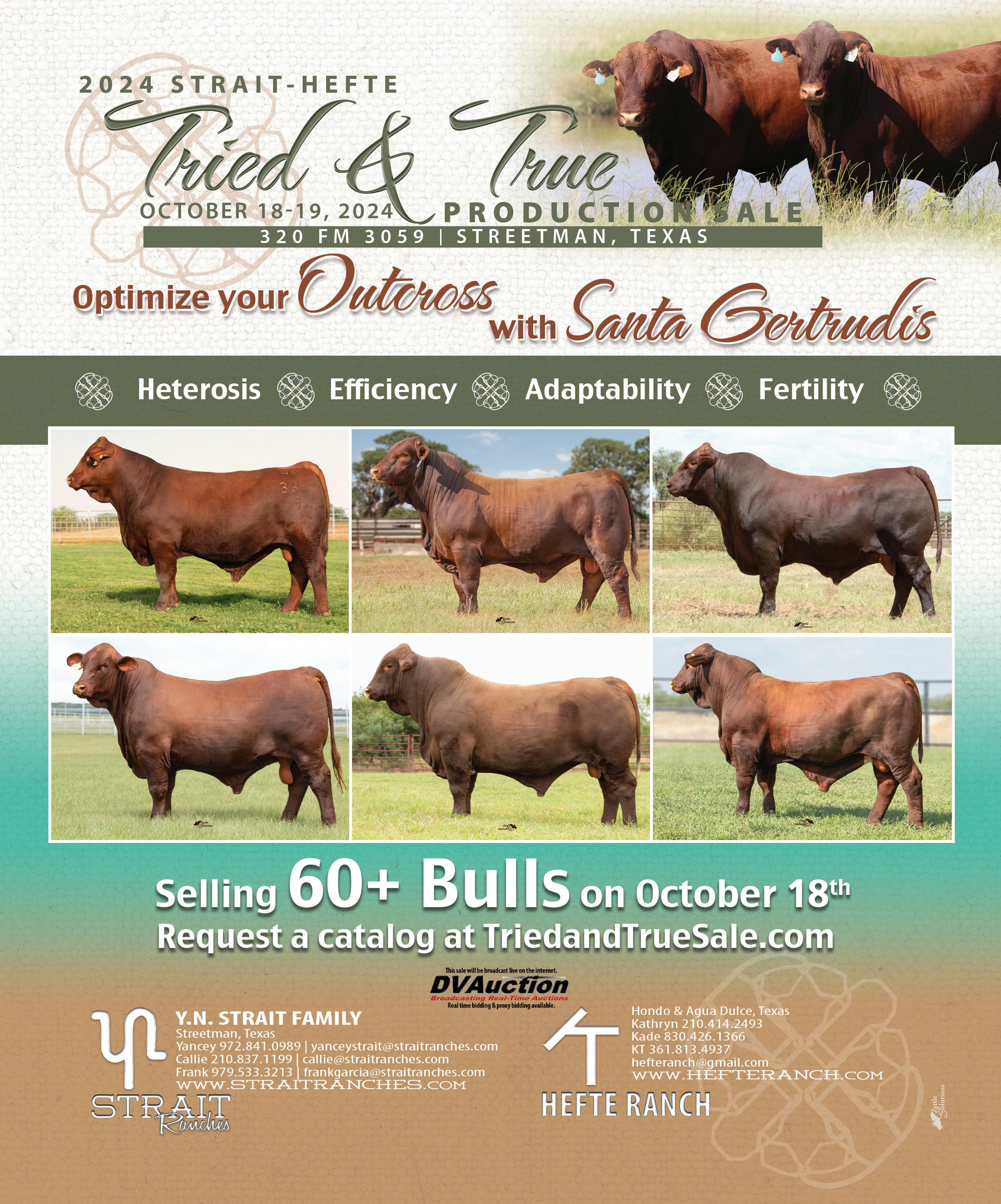













TOPLINE CALIFORNIA SALE
October 5, 2024
Aromas, CA
OZARK FALL BULL SALE
October 12, 2024
Ozark, AR
CALIFORNIA STABILIZER SALE
October 26, 2024
Dinuba, CA

FALL HARVEST SALE
November 9, 2024 Fort Collins, CO
PANHANDLE STABILIZER SALE
November 16, 2024
Gering, NE
HIGH ALTITUDE SALE
December 7, 2024
Loma, CO
CENTRAL PLAINS STABILIZER SALE
December 14, 2024 Alma, NE
TEXAS STABILIZER SALE
December 19, 2024 San Saba, TX


CARL RAY POLK JR. President P.O. Box 155108 Lufkin, Texas 75915

STEPHEN DIEBEL
First Vice President 3907 Salem Rd. Victoria, Texas 77904
John M. “Jack” Shelton III Amarillo, 1984-1986
James L. Powell San Angelo, 1988-1990
Tom Beard Alpine, 1994-1995
C. Coney Burgess Amarillo, 1997-1999
J. Mark McLaughlin San Angelo, 1999-2001
John E. Dudley Comanche, 2001-2003
Bob McCan Victoria, 2003-2005
C.R. “Dick” Sherron Beaumont, 2005-2007
Jon Means Van Horn, 2007-2009
Dave Scott Richmond, 2009-2011
Joe J. Parker Byers, 2011-2013
Pete Bonds Saginaw, 2013-2016
Richard Thorpe lll Winters, 2016-2018
Robert E. McKnight Jr. Fort Davis, 2018-2020
G. Hughes Abell Austin, 2020-2022
Arthur G. Uhl III San Antonio, 2022-2024
VICE PRESIDENTS
Jack Hunt San Juan Capistrano, California
Richard Wortham Austin
P.O. Box 101988 Fort Worth, Texas 76185 817-332-7064 • 800-242-7820
Jason Skaggs Executive Vice President/ Chief Executive Officer
Jaclyn Roberts Parrish Executive Director, Communications & Marketing

DAN GATTIS
Second Vice President and Secretary/Treasurer 213B W. 8th St. Georgetown, Texas 78626
Emily Lochner
Executive Director, Leadership Development & Education
Grace Dunham Executive Director, Events & Partnerships
Megan Wills Executive Director, Finance & Human Resources
Michele Woodham Executive Director, Insurance Services
Scott Williamson Executive Director, Law Enforcement, Brand & Inspection Services
Lisa Walker Executive Director, Membership & Operations
919 Congress Ave., Suite 750 Austin, Texas 78701 512-469-0171
Melissa Hamilton Executive Director, Government Relations



58 TH ANNUAL EXHIBITION & SALE NOVEMBER 1 & 2, 2024
WILL ROGERS MEMORIAL CENTER | ROUND UP INN | FORT WORTH, TEXAS

DIRECTORS
Joe M. “Jody” Bellah, Throckmorton
Blake Birdwell, Canyon
E. S. F. “Swasey” Brainard II, Pampa
J. K. “Rooter” Brite Jr., Bowie
Donnell Brown, Throckmorton
Campbell Burgess, Amarillo
Deborah Clark, Henrietta
Lynn Cowden, Skellytown
J. B. Daniel, Crowell
James Henderson, Memphis
Clayton Henry, Wichita Falls
Brooks Hodges, Guthrie
Joe Leathers, Guthrie
Frank McLelland, Tahoka
Jeff Mitchell, Amarillo
Gage Moorhouse, Benjamin
Diaz W. Murray, Wichita Falls
J. Malcolm Shelton IV, Amarillo
Dale A. Smith, Amarillo
Jim Thompson, Breckenridge
Ross Thompson, Iowa Park
Wesley Welch, Lubbock
HONORARY DIRECTORS
William L. “Buck” Arrington, Pampa Van Baize, Nocona
Emry Birdwell Jr., Henrietta
Mary Lou Bradley-Henderson, Childress
R. A. “Rob” Brown Jr., Throckmorton
J. D. Cage, Muleshoe
Mike Gibson, Paducah
Ronald J. “Ron” Gill, Chico
Robert B. Mansfield, Amarillo
Tom Moorhouse, Benjamin
Boots O’Neal, Guthrie
James Palmer, Roaring Springs
Wilson Scaling, Henrietta
Chris Scharbauer, Amarillo
Tom Watson, Muleshoe
John Welch, Wolfforth
A. B. “Buck” Wharton III, Vernon
Tom Woodward, Decatur
Kevin Busher, Winters
Charles M. “Charley” Christensen Jr., San Angelo
C.A. “Chili” Cole IV, San Angelo
Alan F. Curry, San Angelo
James H. Dudley IV, Horseshoe Bay
Amanda Dyer, Fort Davis
Johnny Ferguson, Big Lake
D.A. “Day” Harral, Fort Stockton
Ron Helm, Van Horn
Heath Hemphill, Coleman
Shelby W. Horn, Fredericksburg
Larry R. Horwood, Sterling City
Grant Jones, Rochelle
Mark W. Jones, Brady
W. Clay Jones, Brady
Ty Keeling, Boerne
Lorenzo Lasater, San Angelo
Brian T. McLaughlin, Midland
David L. Neal, San Angelo
Gerald Nobles Jr., Brady
James Oliver, Ozona
Wade Perks, San Angelo
Jessica Tate, Marfa
James Uhl, Fort McKavett
Cody Webb, Barnhart
Ken Welch, Baird
Ray W. Willoughby III, Eldorado
HONORARY DIRECTORS
C. A. “Chip” Cole III, San Angelo
William C. “Billito” Donnell Jr., Alpine
Richard Gates, Marfa
W. H. “Billy” Green III, Albany
Rafe Hargrove, Rotan
Dr. Joe Pat Hemphill, Coleman
Ken Jordan, San Saba
Don Keeling, Fredericksburg
Chris Lacy, Fort Davis
Laurence M. Lasater, San Angelo
Ben Love, Marathon
Len P. Mertz, San Angelo
Tom Perini, Buffalo Gap
Bill Phinizy, Gail
Frank Price, Sterling City
Gordon E. Sauer, Fredericksburg
Danny B. Stewart, Sterling City
Rick Tate, Marfa
Cliff Teinert, Albany
Dennis W. Webb, Barnhart
W. C. “Billy” Williams, Mertzon
DIRECTORS
Ford Drummond, Pawhuska, Oklahoma
HONORARY DIRECTORS
Les Nunn, Pauls Valley, Oklahoma
DIRECTORS
Edward Bordovsky Jr., Riviera
Austin Brown III, Beeville
W. Christopher Bush, Refugio
James Clement lll, Kingsville
David S. Crow, Corpus Christi
Dustin Dean, Floresville
David DeLaney, Kingsville
Robert “Bobby” Dobson, Birmingham, Alabama
James L. “Jamie” Donnell Jr., Fowlerton
J. David Eppright, Cost
Benjamin Eshleman III, Corpus Christi
Joseph B.C. Fitzsimons, Carrizo Springs
Cody Fry, Lueders
Jim L. Gates, Pearsall
Milton S. Greeson Jr., Victoria
Bret Griffith, Del Rio
Heath Grigg, Kingsville
Marty R. Harris, Tilden
Anson Howard, San Antonio
Leslie Kinsel, Cotulla
Claude Koontz, San Antonio
Steven J. Mafrige, Tilden
Richard Marbach, Victoria
Beth Knolle Naiser, Sandia
Federico Nieto, Raymondville
T. Michael O’Connor, Victoria
Jason Peeler, Floresville
J.R. Ramirez, La Pryor
Gilly Riojas, Corpus Christi
Michael Sasser, Corpus Christi
Lew Thompson, Pearsall
C. Clark Welder, Beeville
John Zacek, Victoria
HONORARY DIRECTORS
Steve G. Beever, Pearsall
Richard H. Bennett, San Antonio
Chip Briscoe, Carrizo Springs
Martin W. Clement II, Kingsville
Thurman S. Clements Jr., Victoria
Nixon Dillard, Pleasanton
Trainor Evans, Mercedes
Thomas J. “Tommy” Haegelin, Concan
Dr. Philip C. Hardee, Beatrice, Alabama
Allen C. “Dick” Jones IV, Corpus Christi
David W. Killam, Laredo
Dan W. Kinsel III, Cotulla
Steve C. Lewis, San Antonio
Jim McAdams, Seguin
James A. McAllen, Linn
Tim Pennell, Westhoff
Jim Peters, Quemado
Scott Petty Jr., San Antonio
Tom Risinger, Weslaco
M. Stuart Sasser, Corpus Christi
Frates Seeligson Jr., San Antonio
Richard Traylor, Batesville
Roger F. Welder, Victoria
David W. Winters, Del Rio
Bill Cawley, Crockett
Wayne Cockrell, College Station
Herff Cornelius Jr., Wadsworth
Carlos Detering III, Houston
Gardner H. Dudley, Houston
Lloyd French IV, Houston
Dan Gattis, Georgetown
Kelley Sullivan Georgiades, College Station
George Harrison, Bay City
Robert Hodgen, Houston
Colt Hoffman, Marlin
Clay Kenley, Crockett
Clive Runnells III, Austin
John Sumner Runnells III, Bay City
Tony Spears, Rosanky
John “Rocky” Sullivan, Galveston
Claudia Scott Wright, Richmond
Jay C. Evans, Dripping Springs
Leroy Ezer, Anahuac
Frank Green, Liberty
Tom J. Haynie, Navasota
Coleman H. Locke, Hungerford
Katharine Armstrong Love, Austin
Richard M. Lucas Jr., Houston
William “Alan” McNeill, Beaumont
Evalyn Moore, Richmond
Raymond E. Moore IV, Richmond
Rick Peebles, Baytown
Gary Price, Blooming Grove
Gordon Richardson, Caldwell
Charles R. “Butch” Robinson, Navasota
Nolan Ryan, Round Rock
Ed Small, Austin
Guy F. Stovall Jr., El Campo
Gerald Sullivan, Galveston
John L. Sullivan, Galveston
Robert J. Underbrink, Houston
Beau Brite White, Rosanky
Dr. M. R. “Mike” Wirtz, Brenham
April Bonds, Saginaw
Missy Bonds, Saginaw
John L. Cantrell, Cresson
Ian Chapman, Madill, Oklahoma
Hunter Crow, Dallas
James T. Dangelmayr, Muenster
Seth Denbow, Weatherford
Crawford Edwards, Fort Worth
John Greer, Henrietta
Jason Harlow, Dallas
Pete Hudgins, Sherman
Tom Johnson, Wortham
Ken Leiber, Fort Worth
Stefan Marchman, Fort Worth
William H. McCall, Fort Worth
Dan Nance, Haslet
Susan Roach, Fort Worth
Stephen S. “Steve” Sikes, Fort Worth
Bragg Smith III, Dallas
Curtis Younts Jr., Belton
Bradford S. “Brad” Barnes, Fort Worth
George Beggs IV, Fort Worth
John W. Carpenter III, Dallas
Barrett D. Clark, Breckenridge
Markham B. Dossett, Waco
Bob Drake, Davis, Oklahoma
James H. “Jim” Dudley, Comanche
John Z. Kimberlin Jr., Dallas
James E. “Jim” Link, Crowley
Jon David Mayfield, Dublin
C. H. “Terry” McCall, Comanche
Bob Moorhouse, Weatherford
Russell “Rusty” Noble, Ardmore, Oklahoma
Mary Joe Reynolds-Montgomery, Fort Worth
Tom L. Roach III, Bozeman, Montana
Stephen T. “Steve” Swenson, Dallas
Bart Wulff, Dallas
Hyde: A journey from rodeo athlete to special ranger.
By Shelby Kirton
Raised in Sequoyah County, Oklahoma, Cody Hyde has always had a strong connection to the land and livestock.
Hyde grew up on a small operation in Eastern Oklahoma where his father managed cow-calf pairs, served as an order buyer and trained racehorses alongside his grandfather. He was immersed in the agricultural lifestyle from an early age.
This upbringing laid the foundation for Hyde’s future, instilling in him a love for the industry and a sense of duty. Like many, he was inspired by those around him.
“My family were all professional firemen, so I knew I wanted to do something in public service,” Hyde says.
His journey into law enforcement was preceded by his passion for rodeo.
Hyde began his rodeo career when he was around 11 years old. He eventually earned a scholarship to Missouri Valley College, where he rode saddle bronc horses and bulls, as well as team roped. Hyde went on to rodeo professionally until 1999.
After retiring from rodeo, he joined the Oklahoma Highway Patrol Academy. He worked four years as a field trooper before transferring to the special operations division. For nearly 20 years, he honed his investigative skills as a K-9 handler working criminal interdiction.
Hyde started his role as District 4 special ranger in June 2022 and was recently promoted to Region 3 supervisor, where he oversees two districts in Eastern Oklahoma.
Serving as a special ranger is an important position — and he says it is not one he takes lightly.
“It’s a major necessity for investigators within the ag industry,” he says. “There are fewer people involved daily in agriculture, so it’s crucial to have someone with this unique background and knowledge.”
For Hyde, the best part of being a special ranger is working with producers of all types and sizes.
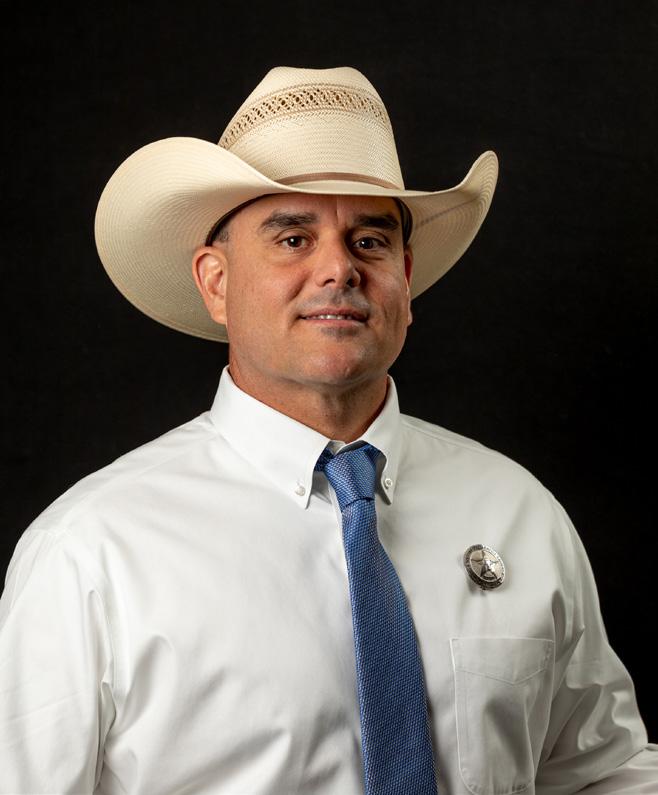
While he gained experience in law enforcement, Hyde’s connection to agriculture, rural Eastern Oklahoma and livestock producers remained. His interest in Texas & Southwestern Cattle Raisers Association continued to grow, too.
“I was always familiar with the association,” he says. “My dad and I used to help friends with branding on their ranch in the Texas Panhandle. They were members of the association, so I saw the iconic gate signs everywhere.”
Hyde says his move to join the special ranger team seemed predestined.
“I had an interest in joining the special ranger force from the highway patrol, and it happened pretty quick,” he said. “I felt like that’s where the Lord was leading me.”
“Even if it’s just two or three missing head of cattle, for a small operation, that’s their livelihood,” he says. “For people in rural America, that’s a big hit. Helping them recover stolen property can be the difference between making it through the season or facing a financial bind.”
Bringing agricultural expertise and steadfast dedication to ranchers and landowners, Hyde says the collective voice of the Texas & Southwestern Cattle Raisers Association special ranger team is critical.
“A lot of these crimes could go unsolved due to lack of industry knowledge from the law enforcement agency that initially takes the report,” he explains. “It’s imperative for us to be a resource utilized by local agencies.”
Despite his demanding job, Hyde says his family remains a top priority. He and his wife, Brooke, manage a small cattle operation with around 50 head and a few horses — balancing daily chores and family activities with their three children and grandkids.
Adding a touch of whimsy, they also care for their pet potbelly pig named Chubbs — a beloved member of their household, according to Brooke.
Hyde’s blend of agricultural roots and commitment to law enforcement makes him an invaluable asset to Texas & Southwestern Cattle Raisers Association members. His story is one of dedication, hard work and a love for the land, ensuring that the legacy of ranching is protected. T C

T r u e 1 5 - 2 0 f t s p a c i n g ,
3 . 8 x s t r o n g e r t h a n a
r e g u l a r T - P o s t
C o a t e d i n i n d u s t r i a l
P o l y u r e a ( B e d l i n e r )
N o t c h e d f o r F a s t &
E a s y n e t w i r e o r
b a r b e d w i r e
i n s t a l l a t i o n
2 5 Y e a r w a r r a n t y

S H I N E R B O R N
A M E R I C A N M A D E
B U I L T T O L A S T 5 0 Y E A R S w w w . v p o s t s . c o m
2 8 1 - 7 3 1 - 1 0 5 5









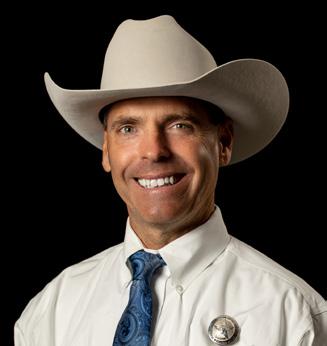



















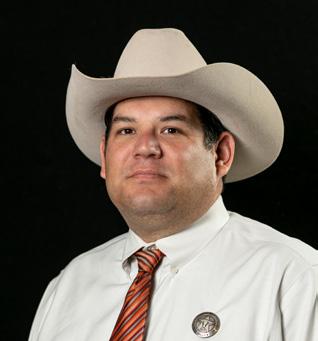

2 Bar C Ranch
Luling
2 Dorris Ranch LLC
Bells
3B Ranch
Fort Worth
3S Cattle Co.
Henderson
4 Peck Ranch
Katy
5K Cattle
Bellville
6H Ranch LLC
Spicewood
Charles Acock
San Antonio
Matthew Acock
San Antonio
Alberty Clayton Parks
Crockett
Anderson Davvle LLC
Jacksboro
Michelle Arbuckle
Mineral Wells
Ernest Bailes
Shepherd
Bar M Cattle Co.
Victoria BarrettAg Edroy
Basset Creek Ranch
Palestine
Kyla Beck
Seguin
Peyton Bivens
Salado
Timothy Boyd Henrietta
Sadie Brannon
Katy
Wade Brown
Cleveland
Darrell Bryant
Henrietta
Stephanie Busby
Fort Worth
Britt Campbell
Terrell Hills
Travis & Kylee Chester
Miami
Circle B Ranch
Troup
Circle Dot Ranch
Forestburg
CJP Ranch LLC
Vidor
Bryan Corb Bowie
Corteva Agriscience El Campo
Covington Lands LP Midland
Bryan & Sherri Crittendon Saltillo
CWB Beef Idalou
D&D Farms
Whitewright
D&S Cattle Co.
Needville
Danford Farms
Buffalo
Dorthy DelNero New Braunfels
Diamond M
Wichita Falls
James Dickerson
Palmer
Dittmar, Dittmar & Haschke
Harper
Hayden Dixon
Stephenville
E.A. Carter & Brother Portland
Robert Emmert
Hockley
Justice Epley Seadrift
Felux Cattle Co. Poth
Avery Frederick
Missouri City
Frio Vista Ranch Ltd. Pearsall
Drew Fuller
San Antonio
G6 Farm & Ranch LP Abilene
Geffert Ranches
College Station
Gilliam Farm
Tyler
Stone Good Tomball
Stacey Greb
Weatherford, Oklahoma
Green Ranch
Hardin
Reagan Grimes
Cherokee
Haden Ray Hatchett
Clyde
Hand Cattle Co.
Clovis, New Mexico
Amanda Hatchett
Clyde
Hayer Farms
Spring
Haystring Ranch
Timpson
Morgan Henderson
Pflugerville
Samuel Henry
Seattle, Washington
Dylan Hinojosa
Kingsville
Hirsch Ranch
Trinity
Hoot Ranch
Point Blank
Horseshoe Pond Ranch LLC
Sugarland
Jason Hughes
Temple
Isbell Ritch Ranch
Downers Grove, Illinois
Gail Jackson
Afton
James Glover & Blue Moon Ranch
Midway
JD Ranch
Celina
JL Ranch
Clarendon
Brian Johnson
Sour Lake
Johnson Family
Hallettsville
Johnson Ranch
Cherokee
Brandon & Emilee Jordan
Boynton, Oklahoma
TJ Justen
Kremlin, Oklahoma
KB Squared Farms
Nemo
Ryan Kief
Nacogdoches
Kimball Cattle Inc.
New Braunfels
Jacob Knight College Station
L&M Livestock LLC
Sonora
Las Lajas Ranch Ltd.
Baltimore, Maryland
Lee Ranch
Gatesville
Niclaus Leyendecker Laredo
Chad Little Kosse
Livestock Nutrition Center
Chickasha, Oklahoma
Lone Star Tracking The Woodlands
Lucky Gap Ranching
Lometa
Rylie Lyons
Malakoff
John Maricar
New Boston
Marshall Ranch
Rockport
Martin Lee Ranch
San Angelo
Rebecca Martinez
Corpus Christi
Matlock Farms
Midland
Sharon May
Anderson
Kayden McKelvey
Iola
McNamer Bodark Ranch
Flower Mound
Ruby Meachen
Giddings
Landon Mehta
Pensacola, Florida
Erin E. Mehta
Plano
Merck Animal Health
Throckmorton
Mill Creek Cattle
Kountze
MLT Farm
Ovalo
MWMLC
Paradise
Nankas RHR
Plano
Travis & Ashley Nelius
Round Top
Northcutt Brothers Cattle
Lexington, Oklahoma
One Eleven TX Farms
Overton
Paraiso Trophy Ranch
San Angelo
Louis Paten
Howe
John Patton
Caldwell
Makayla Pavelka
Waco
Peters/Lazy Rockin P
Rockwall
Garrison Pieaiaze
Ropesville
Pridex
Lone Wolf, Oklahoma
Providence Springs LLC
Dallas
R4 Cattle Co.
Hillsboro
Rafter RD
North Zulch
Rafter V Cattle Co.
Bertram
Rainy Day Ranch
Oakwood
Kelly Ramirez
Carrollton
Maximilano Ayalce Ramirez
Laredo
Douglas Richnow
Houston
River Trail
Bellevue
Roberta H. Gove Trust
Carrollton
Julie Roberts
Lubbock
Rocken 8 Ranch
Cross Plains
Rocking A Ranch
Odessa
Madison Rogers
Castroville
Ty Schaeferkoeter
Spring Branch
Daniel Seyler
Valentine
Shady Oaks Ranch
Crockett
Antonio Silva
College Station
Jack Sinclair
Panhandle
Clint Small
Austin
S.N.G Ranch LLC
Edinburg
Perri Soper
Houston
Southwest Texas Farm & Ranch Supply
Raywood
Gail & Susan Spencer
Aline, Oklahoma
Stenzel Ranches
Valley View
Swingin’K Country Ranch
Rusk
Ben & Meredith Taylor
Coleman
Texana Ranch LLC
Houston
Texas Outdoors
Fort Worth
Thornton Ranch
China
Tod Reed Ranch
Sterling City
Toro 1790 LLC
San Perlita
Dayzee Tovar
Aubrey
TTE Ranch
Crockett
Karen Ulrich
Poth
W4
Rowlett
Wildfire Prevention Corp.
Wimberley
Delaney Williams
Frisco
Wineglass Ranch
Spring Branch
Jasmine Wise
Manor
Zumwalt Cattle Ranch
Marquez
Elkhart Horse Auction
Where: Elkhart
Phone: 903-764-1495
Sale Day: Saturday
Contact: Tiffany Patterson, 903-388-7288
Atascosa Livestock Exchange
Where: Pleasanton
Phone: 830-281-2516
Sale Day: Tuesday Contact: Marvin Bendele, 210-213-5890
Four County Auction
Where: Industry
Phone: 979-357-2545
Sale Day: Tuesday
Contact: Lisa Sebastian, 979-270-3041
BAILEY
Muleshoe Livestock Auction
Where: Muleshoe
Phone: 806-272-4201
Sale Day: Friday
Contact: Leo Aviles, 956-437-3899
BEE
Beeville Livestock Comm.
Where: Beeville
Phone: 361-358-1727
Sale Day: Friday
Contact: Robert Bridge, 361-542-6693
Meridian L/S Comm. Co.
Where: Meridian Phone: 254-435-2988
Sale Day: Monday
Contact: Larry Brown, 254-265-1920
Clifton Livestock Comm. LLC
Where: Clifton Phone: 254-675-7717
Sale Day: Wednesday
Contact: Larry Brown, 254-265-1920
BOWIE
J & J Livestock Auction
Where: Texarkana Phone: 903-832-3576
Sale Day: Saturday
Contact: Cheri Beal, 903-280-4554
BRAZOS
Brazos Valley Livestock Comm.
Where: Bryan Phone: 979-778-0904
Sale Day: Tuesday
Contact: Nina Nygard, 512-281-6753
Caldwell Livestock Comm.
Where: Caldwell Phone: 979-567-4119
Sale Day: Wednesday
Contact: Mark Nygard, 512-281-6330
Lockhart Auction Where: Lockhart Phone: 512-398-3476
Sale Day: Thursday
Contact: Nina Nygard, 512-281-6753
Bruce Overstreet Livestock
Where: Pittsburg
Phone: 903-856-3440
Sale Day: Monday
Contact: Michelle Willeford, 903-767-0670
Tri County Livestock Market
Where: New Summerfield
Phone: 903-322-4940
Sale Day: Saturday
Contact: Jerry Boulware, 936-465-1597
Coleman Livestock Auction
Where: Coleman Phone: 325-625-4191
Sale Day: Wednesday
Contact: Dave Williams, 325-669-2030
Cattleman’s Columbus Livestock Auction
Where: Columbus Phone: 979-732-2622
Sale Day: Wednesday
Contact: Lisa Sebastian, 979-270-1228
Comanche Livestock Exchange
Where: Comanche Phone: 325-356-5231
Sale Day: Saturday
Contact: Michael Davis, 254-879-3121
The New Gainesville Livestock Auction
Where: Gainesville
Phone: 940-665-4367
Sale Day: Friday
Contact: Robin Gibbs, 903-227-0791
Coryell County Comm.
Where: Gatesville Phone: 254-865-9121
Sale Day: Wednesday
Contact: Ray Davis, 254-718-5512
Cattleman’s Livestock Comm.
Where: Dalhart
Phone: 806-249-5505
Sale Day: Thursday
Contact: Clifton Miller, 806-570-7439
Hereford Livestock Auction
Where: Hereford Phone: 806-240-3082
Sale Day: Tuesday
Contact: Joe Bob Via, 806-452-9280
Cuero Livestock Comm. Where: Cuero Phone: 361-275-2329
Sale Day: Friday
Contact: Kaylee Malatek, 979-942-0323
Texas Cattle Exchange
Where: Eastland Phone: 254-629-2288
Sale Day: Tuesday Contact: Ronnie Ober, 817-371-7071
Dublin Livestock Auction
Where: Dublin Phone: 254-445-1734
Sale Day: Friday Contact: Ronnie Ober, 817-371-7071
Erath County Dairy Sale Where: Dublin Phone: 254-968-7253
Sale Day: Friday Contact: Bob McBryde, 940-859-6217
Stephenville Cattle Co. Where: Stephenville Phone: 254-968-4844
Sale Day: Wednesday Contact: Bob McBryde, 940-859-6217
Flatonia Livestock Comm.
Where: Flatonia Phone: 361-865-3538
Sale Day: Monday Contact: Shannon Gallip, 512-995-1492
Schulenburg Livestock Auction Where: Schulenburg Phone: 979-743-6566
Sale Day: Saturday Contact: Vance Weltner, 210-473-9099
Floydada Livestock Sales
Where: Floydada Phone: 806-983-2153
Sale Day: Wednesday Contact: JE Stone, 806-777-4396
Pearsall Livestock Auction
Where: Pearsall Phone: 830-334-3653
Sale Day: Wednesday Contact: Clarence Stevens, 210-415-0441
Gillespie Livestock Co. Where: Fredericksburg Phone: 830-997-4394
Sale Day: Wednesday Contact: Larry Bowden, 210-846-0380
Gonzales Livestock Market
Where: Gonzales Phone: 830-672-2845
Sale Day: Saturday
Contact: JoGayle Stavena, 979-332-2186
Nixon Livestock Comm. Where: Nixon Phone: 830-582-1561
Sale Day: Monday
Contact: Landyn Maguglin, 361-492-9484
Longview Livestock
Where: Longview
Phone: 903-235-6385
Sale Day: Thursday
Contact: Paul Pruitt, 903-725-6200
Mid-Tex Livestock Auction
Where: Anderson
Phone: 936-825-3970
Sale Day: Thursday
Contact: Rick Faught, 936-442-1039
Navasota Livestock Auction
Where: Navasota
Phone: 936-825-6545
Sale Day: Saturday
Contact: Rick Faught, 936-442-1039
Seguin Cattle Co.
Where: Seguin
Phone: 830-379-9955
Sale Day: Wednesday
Contact: Elizabeth Cortez, 830-857-1945
Hamilton Livestock Comm.
Where: Hamilton
Phone: 254-386-3185
Sale Day: Tuesday
Contact: Bob McBryde, 940-859-6217
Gore Family Auction Center
Where: Silsbee
Phone: 409-782-0612
Sale Day: Saturday
Contact: Christy McCoy, 409-782-0612
Athens Comm. Co.
Where: Athens
Phone: 903-675-3333
Sale Day: Friday
Contact: Brandy Baughman, 903-440-4382
Edinburg Livestock Auction
Where: Edinburg
Phone: 956-383-5671
Sale Day: Saturday
Contact: Coney Alvarez Jr., 956-437-3899
Hubbard Livestock Market
Where: Hubbard
Phone: 254-576-2584
Sale Day: Monday
Contact: Bob McBryde, 940-859-6217
Sulphur Springs Livestock Comm.
Where: Sulphur Springs
Phone: 903-885-2455
Sale Day: Monday
Contact: Paul Pruitt, 903-725-6200
East Texas Livestock Auction
Where: Crockett
Phone: 936-544-2246
Sale Day: Tuesday
Contact: Cheyenne London, 936-222-3689
Big Spring Livestock Auction
Where: Big Spring
Phone: 432-267-5881
Sale Day: Wednesday
Contact: Bruce Brandenberger, 254-977-5763
Edna Livestock Auction
Where: Edna
Phone: 361-782-7666
Sale Day: Monday
Contact: Galynn Mazoch, 979-578-1823
Kirbyville Auction Barn
Where: Kirbyville
Phone: 409-423-2612
Sale Day: Saturday
Contact: Erica Morgan, 409-509-1946
Gulf Coast Livestock Market
Where: Alice Phone: 361-664-4395
Sale Day: Tuesday
Contact: Ramiro Garcia, 361-460-0008
Johnson County Cattle Auction
Where: Cleburne
Phone: 817-556-9090
Sale Day: Saturday
Contact: Lee Snyder, 254-707-1682
Karnes City Auction
Where: Karnes City
Phone: 830-780-3382
Sale Day: Saturday
Contact: Elizabeth Cortez, 830-857-1945
Karnes County Livestock Exchange
Where: Kenedy Phone: 830-583-2574
Sale Day: Thursday
Contact: Elizabeth Cortez, 830-857-1945
Cattlemen’s Livestock Comm.
Where: Paris
Phone: 903-784-2238
Sale Day: Saturday
Contact: Lana Caldwell, 903-908-0530
Paris Livestock Auction
Where: Paris
Phone: 903-739-2575
Sale Day: Wednesday
Contact: Robin Gibbs, 903-227-0791
Hallettsville Livestock Comm.
Where: Hallettsville
Phone: 361-798-4336
Sale Day: Tuesday
Contact: Kaylee Malatek, 979-942-0323
Giddings Livestock Comm.
Where: Giddings
Phone: 979-542-2274
Sale Day: Monday
Contact: Nina Nygard, 512-281-6753
Lexington Livestock Comm.
Where: Lexington Phone: 979-773-2922
Sale Day: Saturday
Contact: Nina Nygard, 512-281-6753
Buffalo Livestock Comm.
Where: Buffalo
Phone: 903-322-4940
Sale Day: Saturday Contact: Breanne Dunn, 208-993-3706
Raywood Livestock Market
Where: Raywood Phone: 936-587-4941
Sale Day: Monday
Contact: Harvey Williamson, 963-334-5325
Groesbeck Auction & Livestock
Where: Groesbeck Phone: 254-729-3277
Sale Day: Thursday
Contact: Mallory Steen, 903-390-0594
Live Oak Livestock Auction
Where: Three Rivers Phone: 361-786-2553
Sale Day: Monday Contact: Marvin Bendele, 210-213-5890
Jordan Cattle Auction
Where: Mason Phone: 325-347-6361
Sale Day: Monday
Contact: Warren Ottmers, 830-669-2262
West Auction
Where: West Phone: 254-826-3725
Sale Day: Thursday Contact: Ray Davis, 254-718-5512
Union Comm.
Where: Hondo Phone: 830-741-8061
Sale Day: Monday Contact: Clarence Stevens, 210-415-0441
Milam County Livestock Auction
Where: Cameron Phone: 254-697-6697
Sale Day: Friday
Contact: Rick Faught, 936-442-1039
Nacogdoches Livestock Exchange
Where: Nacogdoches Phone: 936-564-8661
Sale Day: Thursday
Contact: Michael Witcher, 936-556-0992
Corsicana Livestock Market
Where: Corsicana
Phone: 903-872-1631
Sale Day: Tuesday
Contact: Kenda Meek, 254-379-3229
Carthage Livestock Auction LLC
Where: Carthage Phone: 903-693-6361
Sale Day: Tuesday
Contact: Lori Blankenship, 936-234-3441
Livingston Livestock Exchange
Where: Livingston Phone: 936-327-4917
Sale Day: Saturday
Contact: Harvey Williamson, 963-334-5325
Lonestar Stockyards
Where: Amarillo Phone: 806-677-0777
Sale Day: Tuesday
Contact: Gary McClellan, 806-334-0517
Emory Livestock Auction
Where: Emory Phone: 903-473-2512
Sale Days: Tuesday & Saturday
Contact: Brandy Baughman, 903-440-4382
Calvert Livestock Co.
Where: Calvert
Phone: 979-364-2829
Sale Day: Friday
Contact: Ray Davis, 254-718-5512
RUSK
Hunt Livestock Exchange
Where: Henderson Phone: 903-657-2690
Sale Day: Monday
Contact: Samuel Steadman, 318-617-1141
Jordan Cattle Auction
Where: San Saba
Phone: 325-372-5159
Sale Day: Thursday
Contact: David Munden, 325-456-7253
Center Auction Co.
Where: Center
Phone: 936-598-4395
Sale Day: Wednesday
Contact: Michael Witcher, 936-556-0992
Triple G Livestock Auction LLC
Where: Rio Grande City
Phone: 956-437-1988
Sale Day: Friday
Contact: Coney Alvarez Jr., 956-437-3899
Tulia Livestock Auction
Where: Tulia
Phone: 806-995-4184
Sale Day: Thursday
Contact: Tommy Thompson, 806-690-4080
Abilene Auction
Where: Abilene
Phone: 325-673-7865
Sale Day: Tuesday
Contact: Dave Williams, 325-669-2030
Stone Livestock Comm.
Where: Mt. Pleasant
Phone: 903-575-9099
Sale Day: Tuesday
Contact: Paul Pruitt, 903-725-6200
Producers Livestock Auction
Where: San Angelo
Phone: 325-653-3371
Sale Day: Thursday
Contact: Bruce Halfmann, 325-315-5972
Southwest Livestock Exchange
Where: Uvalde Phone: 830-278-5621
Sale Day: Thursday
Contact: Clarence Stevens, 210-415-0441
Mort Livestock Exchange
Where: Canton
Phone: 903-287-6386
Sale Day: Special Sales Only
Contact: Paul Pruitt, 903-725-6200
Brenham Livestock Auction
Where: Brenham
Phone: 979-836-3621
Sale Day: Friday
Contact: Lisa Sebastian, 979-270-3041
El Campo Livestock Exchange LLC
Where: El Campo Phone: 979-543-2703
Sale Day: Tuesday Contact: Galynn Mazoch, 979-578-1823
Wharton Livestock Auction
Where: Wharton Phone: 979-532-3660
Sale Day: Wednesday
Contact: Galynn Mazoch, 979-578-1823
Wichita Livestock Sales
Where: Wichita Falls Phone: 940-541-2222
Sale Day: Wednesday Contact: R.C. Langford, 832-330-7279
Vernon Livestock Market LLC
Where: Vernon Phone: 940-552-6000
Sale Day: Tuesday
Contact: Dennis Wilson, 940-613-7693
Decatur Livestock Market
Where: Decatur Phone: 940-627-5599
Sale Day: Monday
Contact: Rebecca Benson, 940-389-6382
Winnsboro Livestock Auction
Where: Winnsboro Phone: 903-365-2201
Sale Day: Friday
Contact: Alan Pruitt, 903-725-6200
Graham Livestock Comm. LLC
Where: Graham Phone: 940-549-0078
Sale Day: Monday
Contact: Kyla Rater, 940-284-9968






STEVE & GINGER OLSON (806) 676-3556
Steve@olsoncattle.com


Registered Black Herefords bacicafarms.com


Mike & Carla Bacica 11707 FM 2868 Flint, TX 75762
Mike: 903-520-0390 mbpga@aol.com Carla: 903-530-8551 wtnca@aol.com

www.americ anredbrangus.org


Wa tt M . C asey/ Watt J r. 325- 66 8-1373 Alb any, Tex as 764 30 ww w.CaseyBeef ma sters.co m
Carr
Ranch Beefmasters Quality Beefmaster Cattle Ranches in Webb, Wilson and Kendall counties Mailing Address: P.O. Box 2947 Laredo, Texas 78044 Phone: 361/586-5067

Cullin Smith (409)779-9872
Detering Red Brahmans
Beef Oriented Red Brahmans for the pasture and the show ring Liendo Plantation, 38653 Wyatt Chapel Rd. Hempstead, TX 77445 Will Detering, owner 281.989.8965 Web site: deteringredbrahmans.com
PARTI N & PARTI N H EART BAR RANC H

Quality Brahman Ca le Since 1936

Janet, Steve and Carlton Partin 3159 FM 837 • Montalba, Texas 75853 903-549-3000 • partin.partin@aol.com
Janet Partin: 903-922-3689 Carlton Partin: 407-709-0297 www.heartbarranch.com
Generation
Sugie Sartwelle J. D. Sartwelle III 361-500-5792 Email: sartwellej@gmail.com Visitors are always Welcome Sensibly Bred and Raised Brahman Cattle 979-877-4239
Sartwelle Brahman Ranch Ltd P O Box 27, Campbellton, Texas USA 78008

RANCH at LOST PRAIRIE LAKE • Palestine, Texas
Registered Gray Brahmans Dr. Scott & Nancy Satterfield 410 ACR 376 • Palestine, TX 75801 830-613-1492 www.satterfieldranch.com




C ATTLE C OMPANY
Registered Brangus & Charolais Bulls 713.204.4903 or 713.253.4804
Call about bulls • Cuero, Texas R AMRO LLC/

Caleb Boscamp 830-857-5189
Julie Boscamp 830-857-5129 julieboscamp@yahoo.com 303 County Road 459 • Waelder, TX 78959 www.arrowheadcharolaisranch.com
Dennis Cha r olais Bull s
40 years of selective breeding/performance testing for… Easy Calving and… Explosive Growth Eric and Angie Dennis Saint Jo, TX 940/995-2161 940/841-2792 Cell Curtiss Nipp 580.513.3555







“Registered Herefords Since 1938”
John 325-642-0745 • Tom 325-642-0748 Comanche, Texas; Ph. 325-356-2284; Fax 325-356-3185 Email: john@dudleybros.com


923 Hillside Ave. Canadian, TX 79014 806-323-2906 lee@indianmoundranch.com www.indianmoundranch.com Lee & Jacqui Haygood
4609 Airport Freeway Fort Worth, Texas 76117 817/831-3161

Wesley Theuret Herefords Horned Bulls and Females 2348 CR 165, Kenedy, TX 78119 theuret@sbcglobal.net 210-315-0103
J .T . E chols DVM
P.O. Box 709 • Breckenridge, TX 76424 Of: (254) 559-9739 • Cell: (254) 559-0156 muleshoeranch@gmail.com
Registered Polled Herefords & Black Baldies
Contact: Nina Neel Sanders 214-454-8587 • Brady, TX
“Quality Registered Herefords” Est.1921 – Bulls for sale at all times out of good milking cows
Office: 512-446-6200 Cell: 979-218-0065

Foundation Blue Roan Quarter Horses 325-754-5275 www.MesaTRanch.com

Texas’Only Hereford Operation West of the
Jim and Sue Darnell






T HOMAS CHAR O LAIS, INC . P.O. Box 595 • Raymondville, Texas 78580

Mitch Thomas: 956-535-0936
Tonnyre Thomas Joe: 956-535-0942 thomasra@gte.net www.thomascharolais.com
Lake, Texas on Highway 137. Steve Wayne Coates Box 645 Mertzon, TX 76941 325/835-2531
Registered Polled Herefords


















BRIGGS RANCHES P.O. Box 1417 Victoria, Texas 77902 361/573-7141 Traylor Division San Roque DivisionSan Carlos Division Bloomington, TX Catarina, TXRio Grande City, TX Joe Jones-Manager • 361/897-1337

Borchers Southern Y Ranches, L.P. Charla Borchers-Leon • Mary Kay Borchers 2401 N. Wheeler St. • Victoria, Texas 77901 • 361-575-1297 Santa Gertrudis • Braford F-1 Purebred • Star 5 • Crossbred Cattle Steven Boothe 361-575-1297 O • 361-571-9728 M Harris Riverbend Farms P.O.Box 691 Cleburne, TX 76031 Performance Tested Beef Type Glen Rose, TX David Harris Home (817) 641-4159 Office (817) 641-4771 Santa Gertrudis From The Home of “Reputation” Breeding Santa Gertrudis Since 1936 SANTA GERTRUDIS CATTLE Box 869, San Diego, Texas 78384 Ranch: 361-701-5683



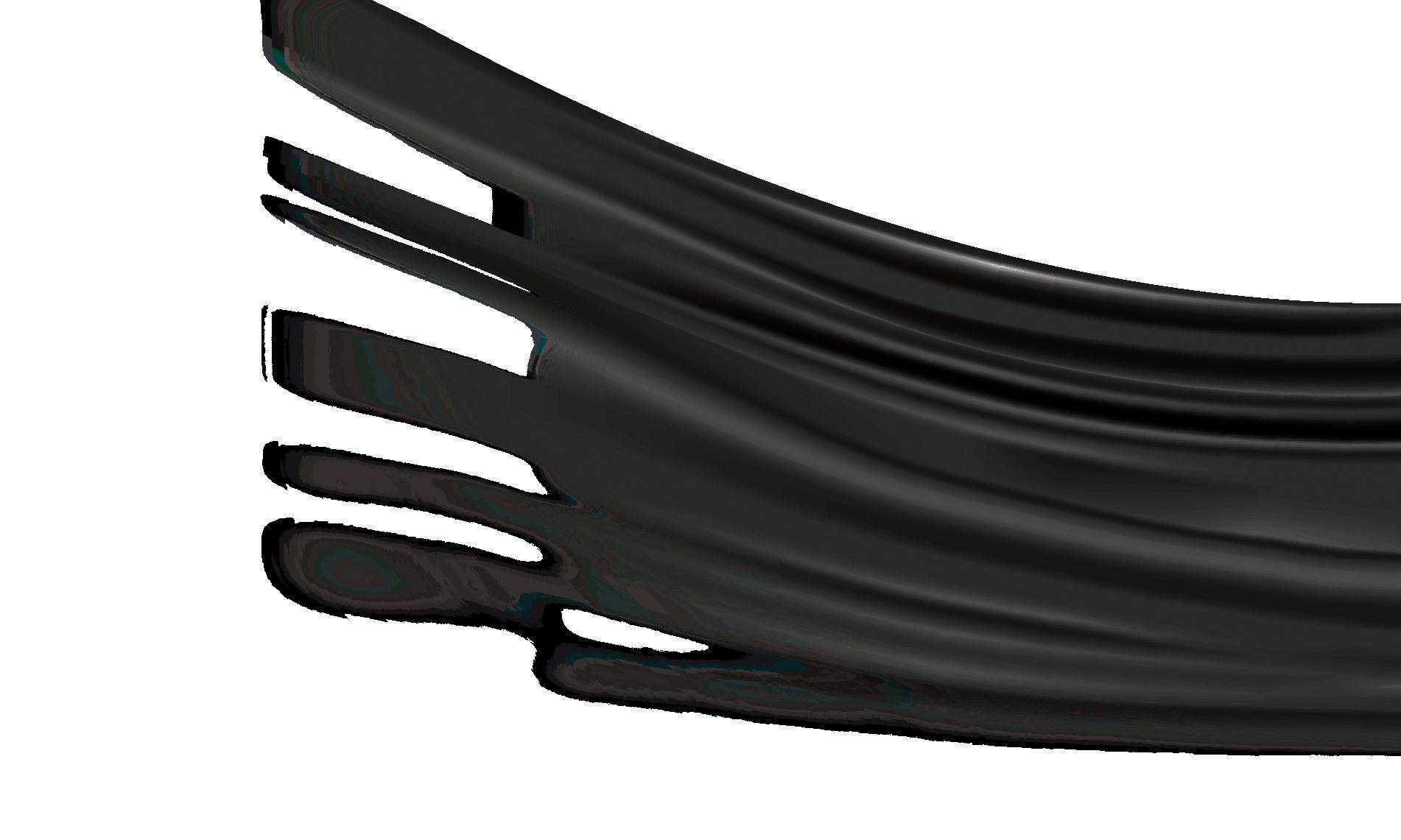
When seasonal diseases left hook your best preventive efforts, Norbrook® backs your fight with treatment options from 5 distinct antibiotic categories. So choose your best prevention, but keep your treatment options open, because you never know what kind of punch seasonal diseases will throw your way. To learn more, talk to your veterinarian, animal health distributor, or visit Norbrook.com.

TUESDAY, OCT. 1
McKenzie Land & Livestock: Fall Sale Where: Fort Stockton When: 1 p.m.
TSCRA Traceability Webinar Where: Online When: 7 p.m.
THURSDAY, OCT. 3
Jordan Cattle Auction: Special Bull Sale, Featuring Sutphin Cattle Co. Where: San Saba When: 10 a.m.
Dudley Bros: 63rd Annual Bull Sale Where: Comanche When: 12 p.m.
Bayou Creek Ranch: 6th Annual Production Sale Where: Lone Grove, Oklahoma When: 1 p.m.
SATURDAY, OCT. 5
Isa Beefmasters: 63rd Bull Sale Where: San Angelo When: 10 a.m.
Leachman Cattle: Topline California Sale Where: Aromas, California
TUESDAY, OCT. 8
Powell Ranch Herefords: 27th Annual Production Sale Where: Fort McKavett When: 12:30 p.m.
THURSDAY, OCT. 10
GKB Cattle: Inaugural Fall Bull Sale Where: Desdemona When: 12 p.m.
Jordan Cattle Auction: Special Bull Sale, Featuring Collier Diamond C Red Angus, Dybdal Charolais & Hickory Sand Brangus Where: San Saba When: 10 a.m.
Texas Agricultural Land Trust Working Lands Innovation Summit Where: Henrietta When: 1 p.m.
TSCRA Ranch Gathering Where: Fredericksburg When: 5:30 p.m.
SATURDAY, OCT. 12
Thomas Charolais: 23rd Annual Bull Sale Where: Raymondville When: 1 p.m.
Leachman Cattle: Ozark Fall Bull Sale Where: Ozark, Arkansas
SUNDAY, OCT. 13TUESDAY, OCT. 15
Texas Cattle Feeders Assoc.: Annual Convention Where: San Antonio
MONDAY, OCT. 14
Indian Mound Ranch: Annual Production Sale Where: Canadian When: 12:30 p.m.
TUESDAY, OCT. 15
Ranching 101: Building a Bull-Buying Budget Where: Online When: 1 p.m.
TSCRA Ranch Gathering Where: San Angelo When: 5:30 p.m.
WEDNESDAY, OCT. 16
Jordan Cattle Auction: 11th Annual Hill Country Youth Heifer Sale Where: San Saba When: 10 a.m.
THURSDAY, OCT. 17
Jordan Cattle Auction: Special Bull Sale Featuring Knox Brothers Where: San Saba When: 10 a.m.
Wilks Ranch: Annual Fall Production Sale Where: Eastland
FRIDAY, OCT. 18
W4 Ranch: Fall Production Sale Where: Morgan When: 12:30 p.m.
FRIDAY, OCT. 18SATURDAY, OCT. 19
Strait Ranches & Hefte Ranch: 2024 Strait-Hefte Tried & True Production Sale Where: Streetman
SATURDAY, OCT. 19
Fink Beef Genetics: Bull Sale Where: Randolph, Kansas When: 12 p.m.
MONDAY, OCT. 21
White Hawk Ranch: Georgia’s Big Fall Event Where: Buchanan, Georgia
WEDNESDAY, OCT. 23
Cox Ranch: Angus Bull & Female Sale Where: Peaster When: 6 p.m.
THURSDAY, OCT. 24
TSCRA Ranch Gathering Where: Brenham When: 5:30 p.m.
SATURDAY, OCT. 26
Jordan Cattle Auction: “Best of the Best” Special Replacement Female Sale Where: San Saba When: 10 a.m.
44 Farms: Fall Bull Sale Where: Cameron When: 10 a.m.
Briggs Ranches: 21st Annual Bull & Commercial Female Sale Where: Bloomington When: 11 a.m.
Case Ranch & Rocking Chair Ranch: Consigning Cattle to South Texas Hereford Assoc. Sale Where: Beeville When: 12 p.m.
Nipp Charolais & Friends: Annual Fall Production Sale Where: Wilson, Oklahoma When: 1 p.m.
7P Ranch: 49th Annual Production Sale Where: Winona When: 1 p.m.
Leachman Cattle: California Stabilizer Sale Where: Dinuba, California
MONDAY, OCT. 28
Jordan Cattle Auction: Stocker & Feeder Sale Where: Mason When: 10 a.m.
FRIDAY, NOV. 1SATURDAY, NOV. 2
Cattle Raisers Museum: Cowboy Artists of America 58th Annual Exhibition & Sale Where: Fort Worth
SATURDAY, NOV. 2
Barnett Angus Ranches: 5th Annual BAR Bull Sale Where: Washington, Georgia When: 12 p.m.
WEDNESDAY, NOV. 6
TSCRA Ranch Gathering Where: Goliad When: 5:30 p.m.


THURSDAY, NOV. 7
Jordan Cattle Auction: Special Bull Sale
Featuring Hales Angus Farm & Cannon Charolais Where: San Saba When: 10 a.m.
TSCRA Ranch Gathering Where: Laredo When: 5:30 p.m.
THURSDAY, NOV. 7FRIDAY, NOV. 8
HOLT CAT Symposium on Excellence in Ranch Management Where: Kingsville and Online
FRIDAY, NOV. 8
Double Creek Farms: Bull Sale Where: Clifton When: 12:30 p.m.
SATURDAY, NOV. 9
Arrowhead Ranch: 17th Annual Bull Sale Where: Gonzales Livestock Market, Gonzales When: 11 a.m.
Leachman Cattle: Fall Harvest Sale Where: Fort Collins, Colorado
TUESDAY, NOV. 12
Wilks Ranch: Annual Bull Sale Where: Eastland
WEDNESDAY, NOV. 13
Jordan Cattle Auction: Special Bull Sale, Featuring Barber Hereford Ranch & Express Ranch Angus Where: San Saba When: 11 a.m.
THURSDAY, NOV. 14
Wichita Falls Luncheon Where: McBride’s Steakhouse, Wichita Falls When: 11:30 a.m.
Adams Ranch: 46th Annual Bull & Heifer Sale Where: Fort Pierce, Florida When: 12 p.m.
TSCRA Ranch Gathering Where: Houston When: 5:30 p.m.
FRIDAY, NOV. 15
Jorgensen Land & Cattle: Legends of the Fall Bull Sale Where: Arcadia, Florida When: 5:30 p.m.
FRIDAY, NOV. 15SATURDAY, NOV. 16
Cavender Ranches: 20 th Annual Fall Sale Where: Jacksonville
SATURDAY, NOV. 16
Leachman Cattle: Panhandle Stabilizer Sale Where: Gering, Nebraska
TUESDAY, NOV. 19
Ranching 101: Feed Your Cows Cake Where: Online When: 1 p.m.
THURSDAY, NOV. 21
Jordan Cattle Auction: Special Bull Sale, Featuring Schaefer Farms & Shady Oaks Farm Where: San Saba When: 10 a.m.
TSCRA Ranch Gathering Where: Dallas When: 5:30 p.m.
MONDAY, NOV. 25
Gardiner Angus Ranch: 22nd Annual Profit Proven Commercial Female Sale Where: Ashland, Kansas

Red Angus boosts profitability with docile temperaments, environmental resilience, premium carcass quality and exceptional maternal traits. Registrations have surged by 24% over the past decade, underscoring Red Angus’ significance across all segments of the beef industry.
Scan the QR code for real rancher stories about the rising power of Red Angus.














C








Times were changing. This issue of The Cattleman discussed a major revolution in conditioning cattle.
Dr. Tage U. Ellinger, Armour’s Livestock Bureau assistant director, was quoted on the new trend toward younger feeder cattle.
“The system today is based largely on the ‘baby beef.’ Farmers in the western states raise cattle only until they are about 7 to 10 months old,” Ellinger said. “And they breed them carefully from the best beef-producing stock.”
The “baby beeves” were then sent to the corn belt to be fattened. This shift was reflected by a reduction in the average weight of all cattle slaughtered in the U.S. from 1,053 pounds in 1893 to 996 pounds in 1923.
“Baby beef are the most economical of cattle from the viewpoint of meat production,” Ellinger said. “Of the total weight of a baby beef on the hoof, 57% is salable meat, while on the range steer, only 42% is meat.” T C
“Several years ago I made the switch to Nelson Tetraploid Ryegrass from Gulf ryegrass. NO WAY I’m going back to Gulf... Nelson increases forage production and extends grazing days. With Nelson, the ranch is producing more Beef, and that means more dollars to our bottom line ... with only a little extra seed cost. The extra production from this switch to Nelson really helps to reduce our costs. (fertilizer and fuel costs)
I’m staying with Nelson Ryegrass! NO WAY I’m going back... My cattle like it... and so do I!”

Carlos Bonnot - DVM
Bonnot Ranch • La Ward, Texas















